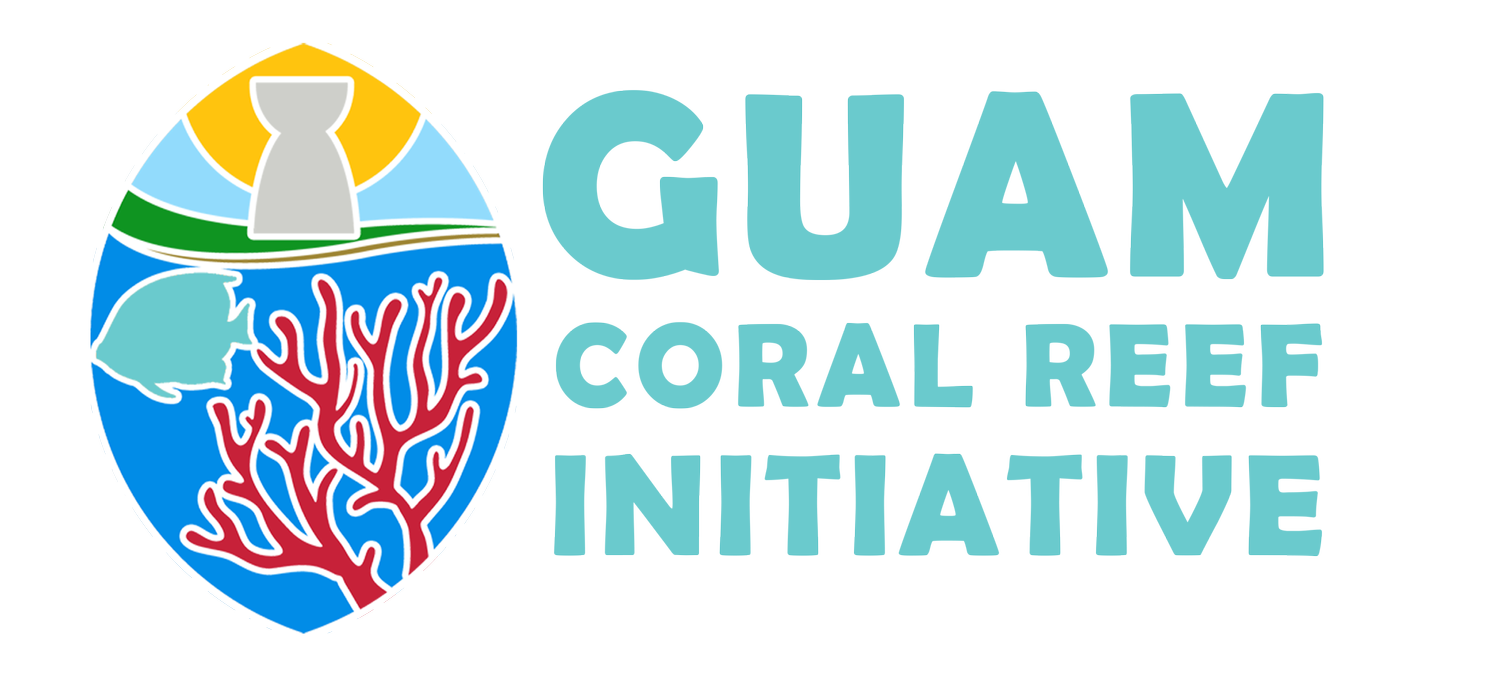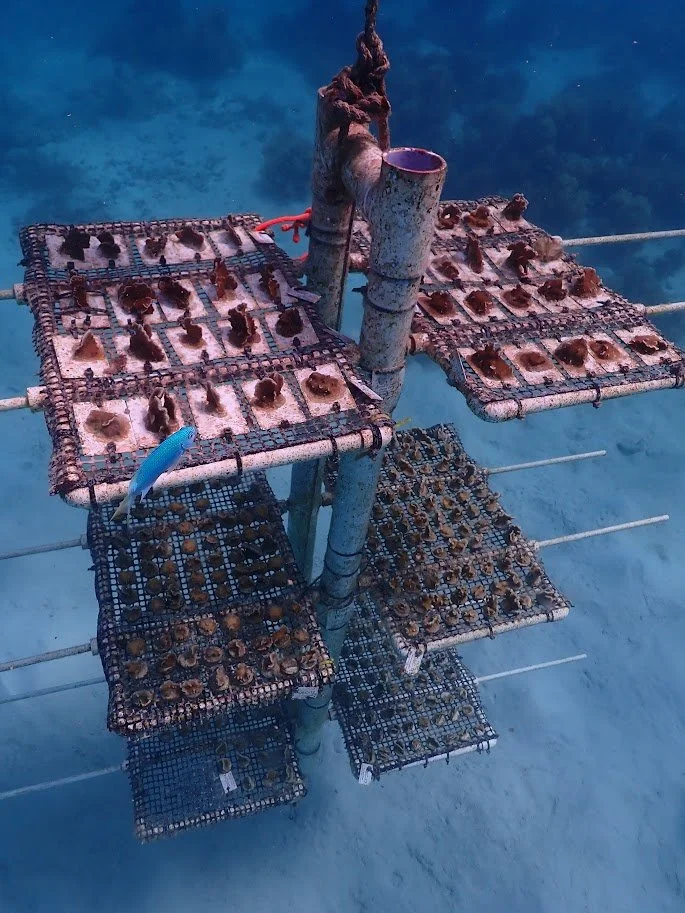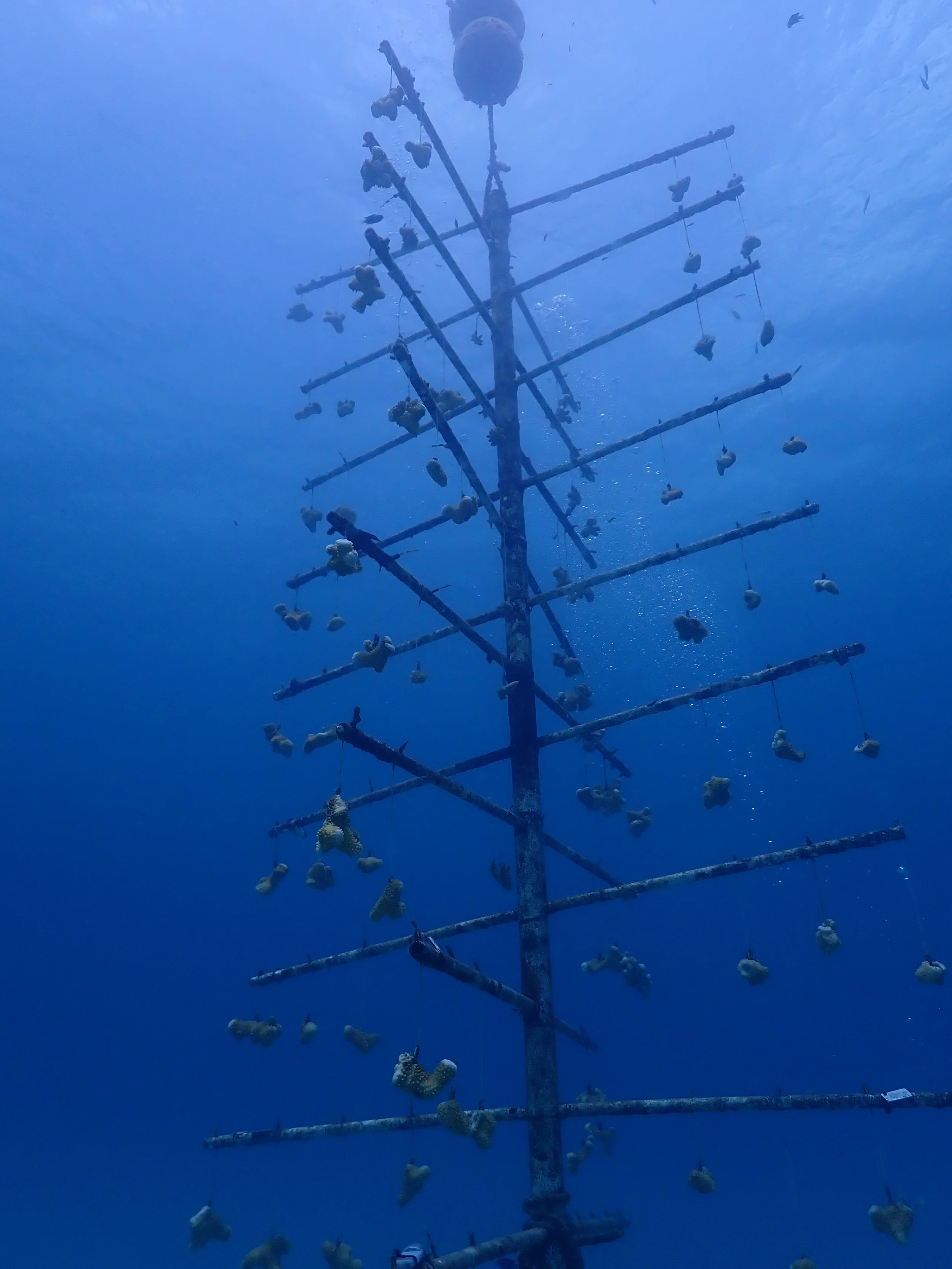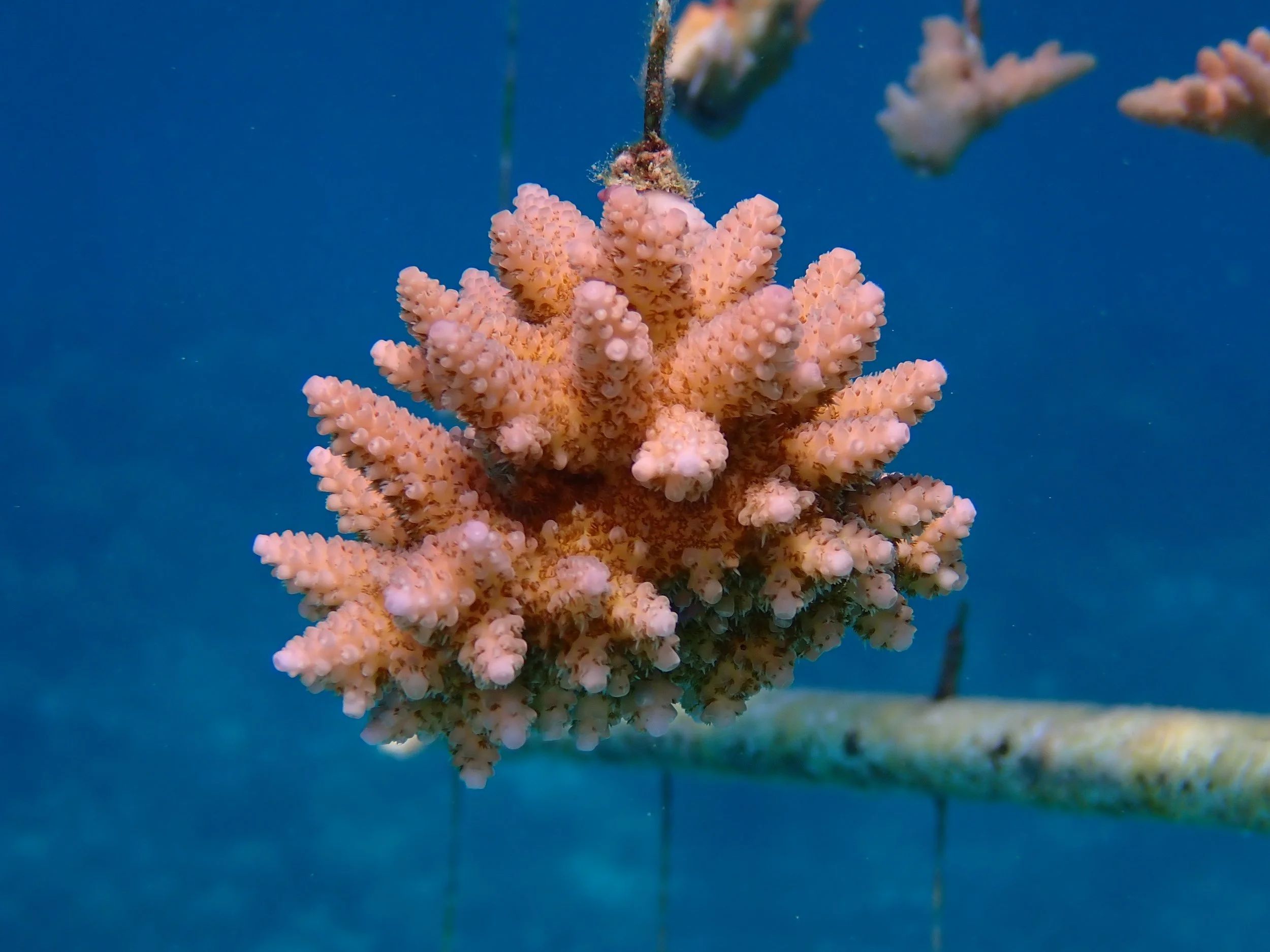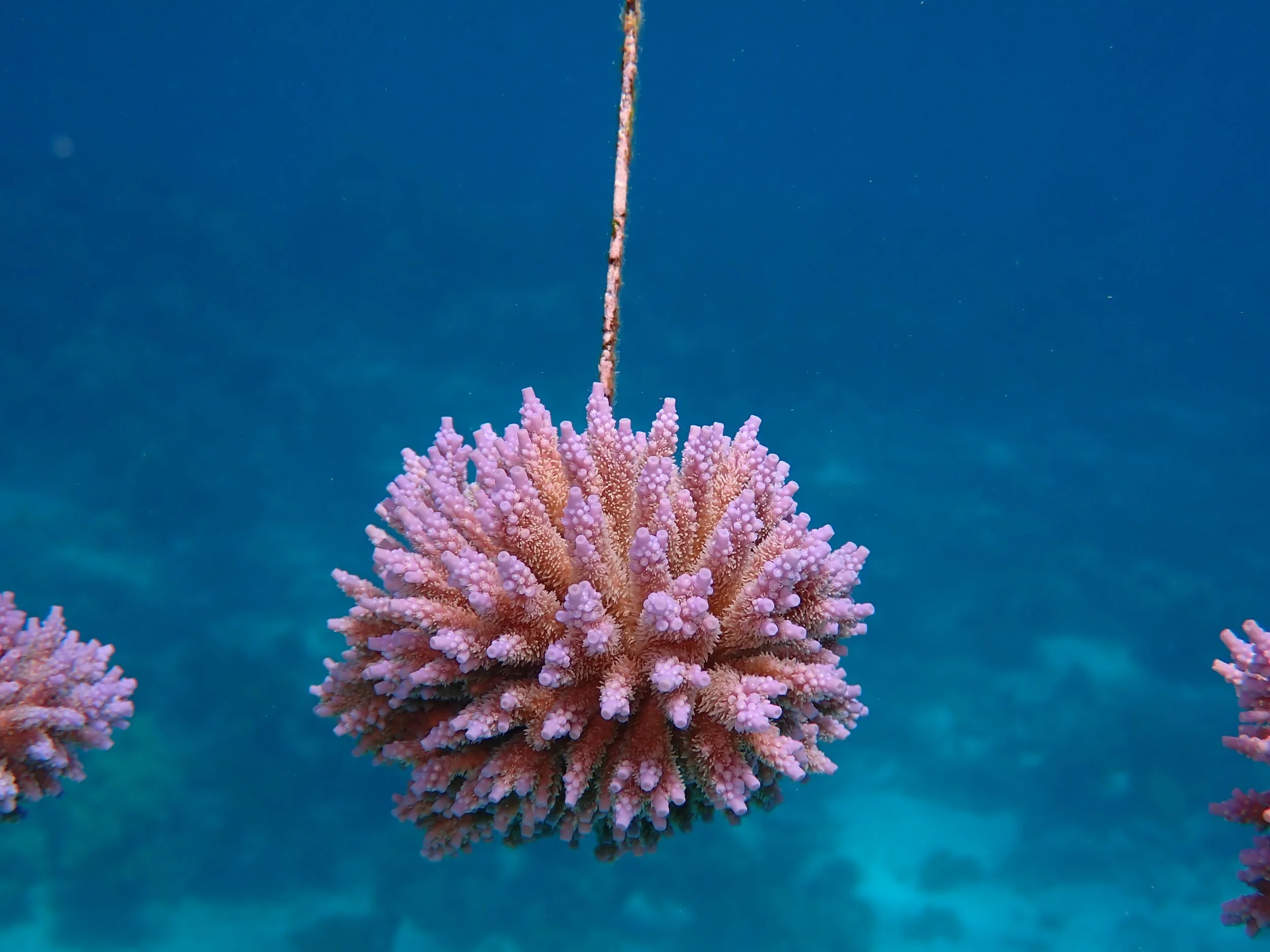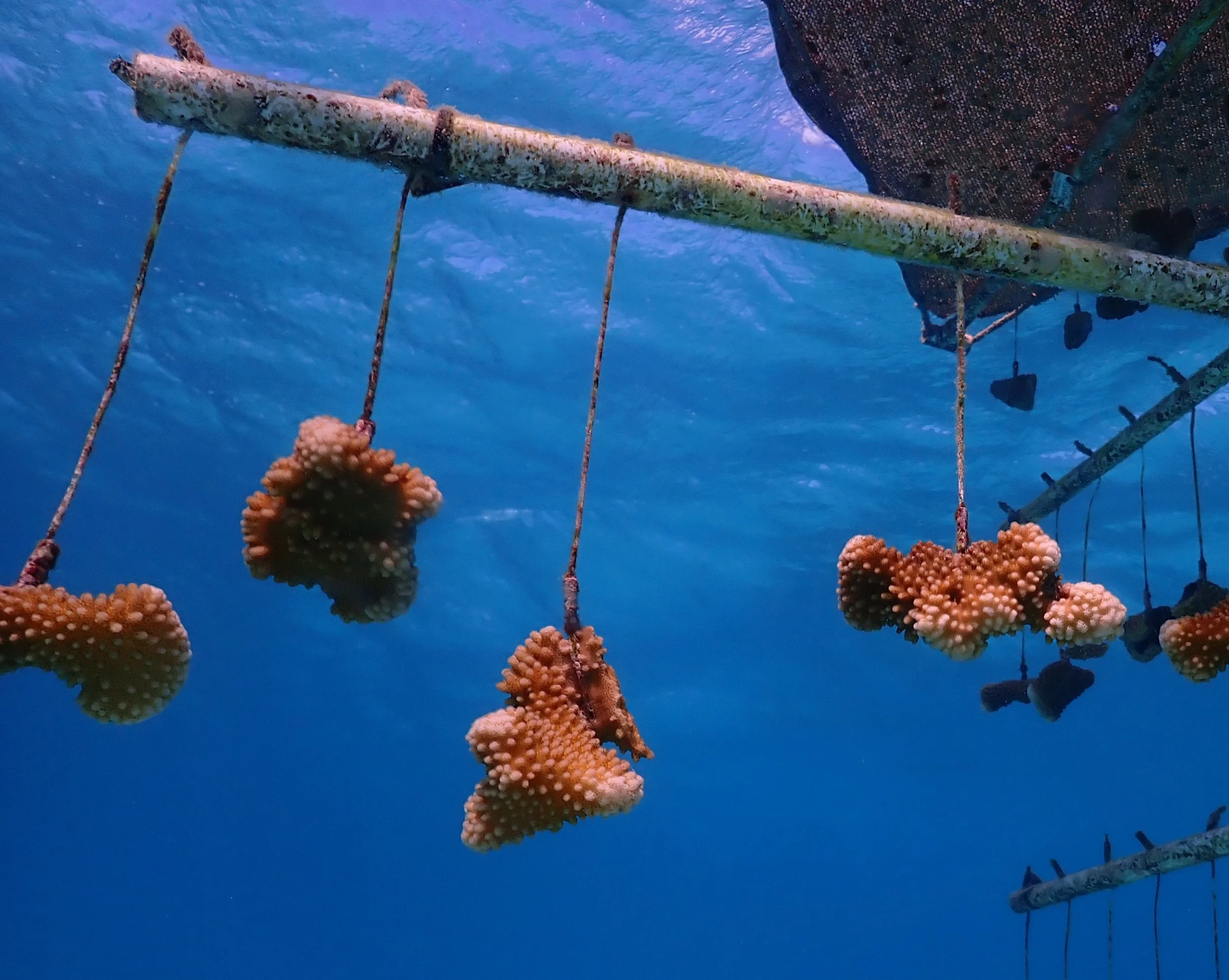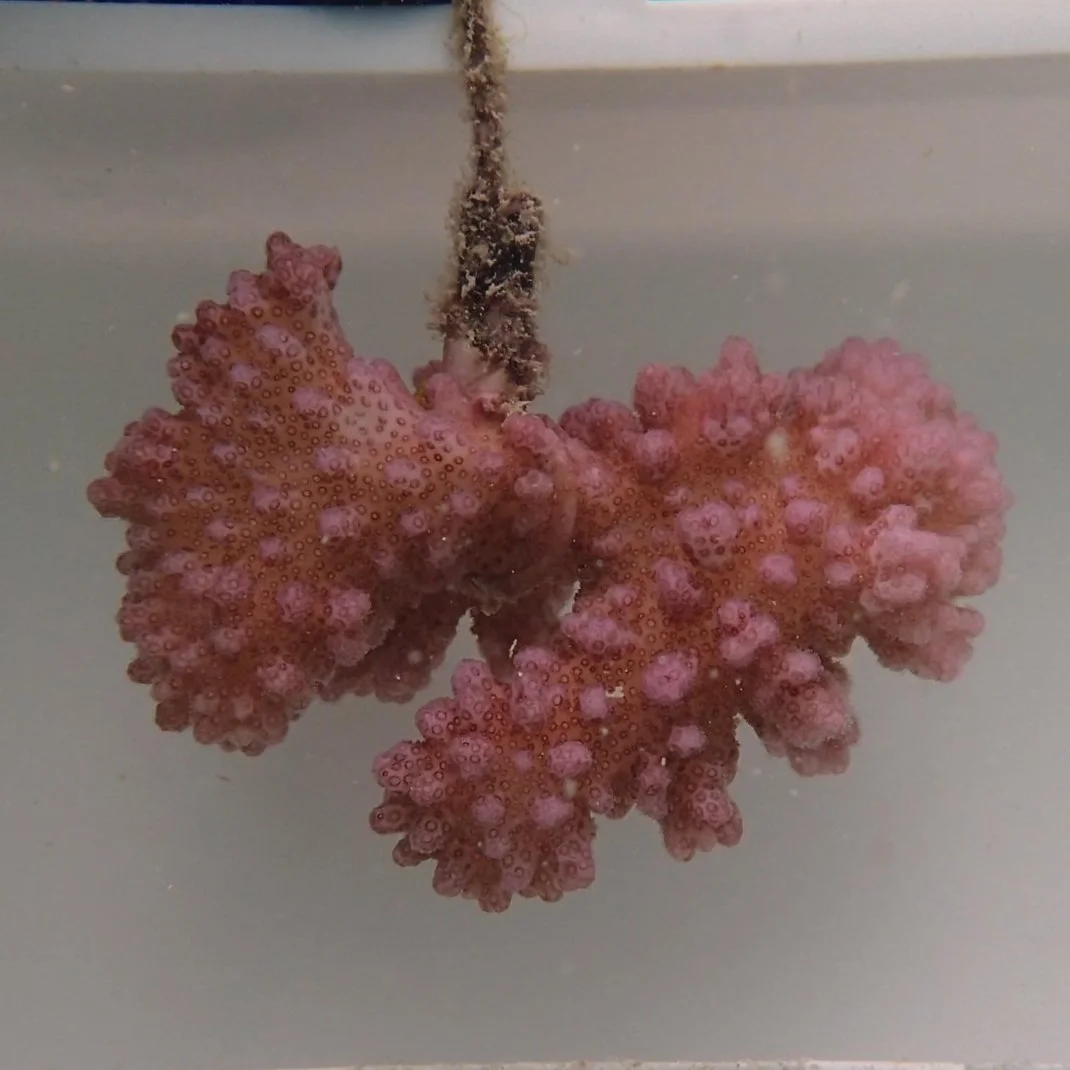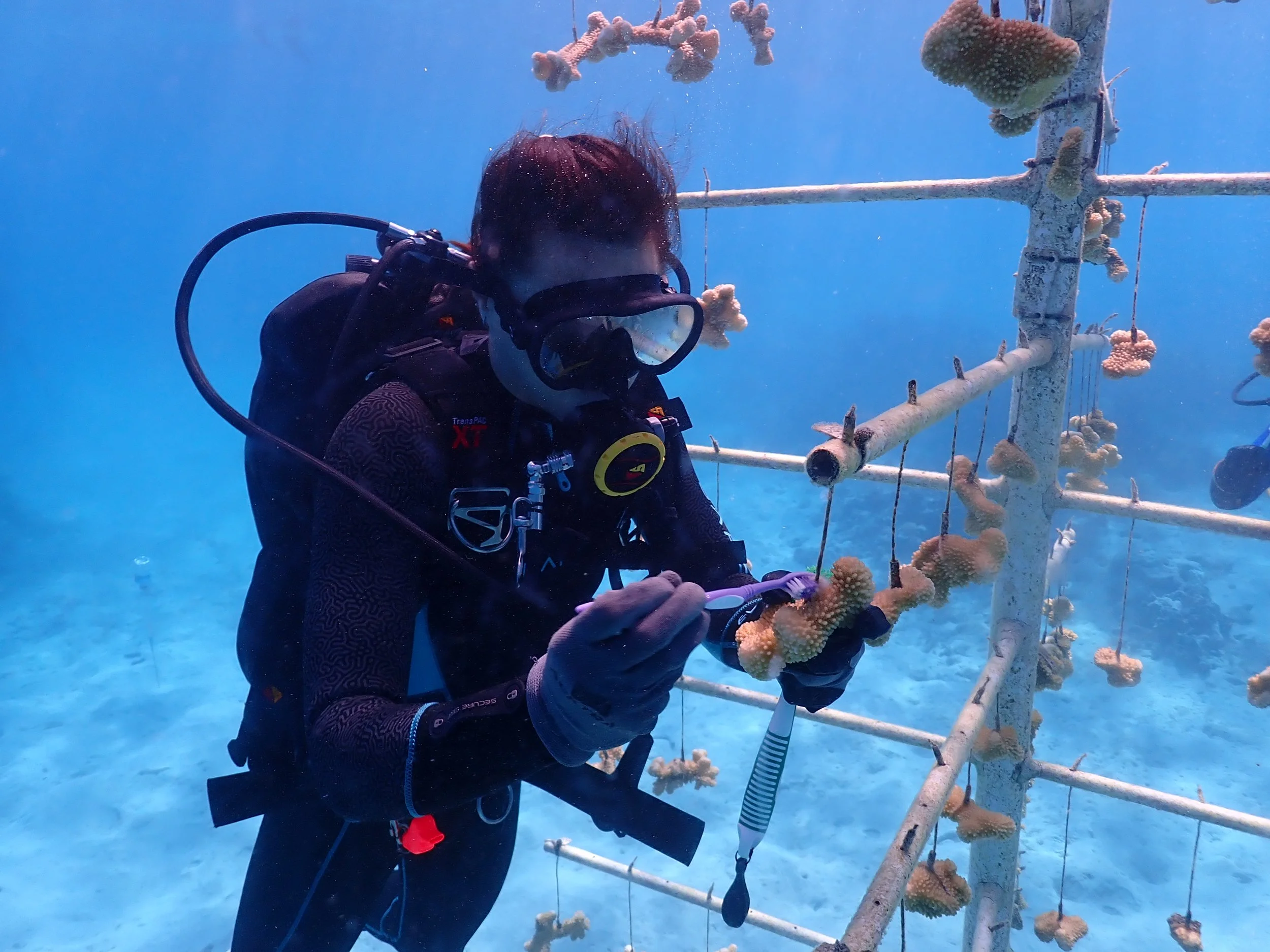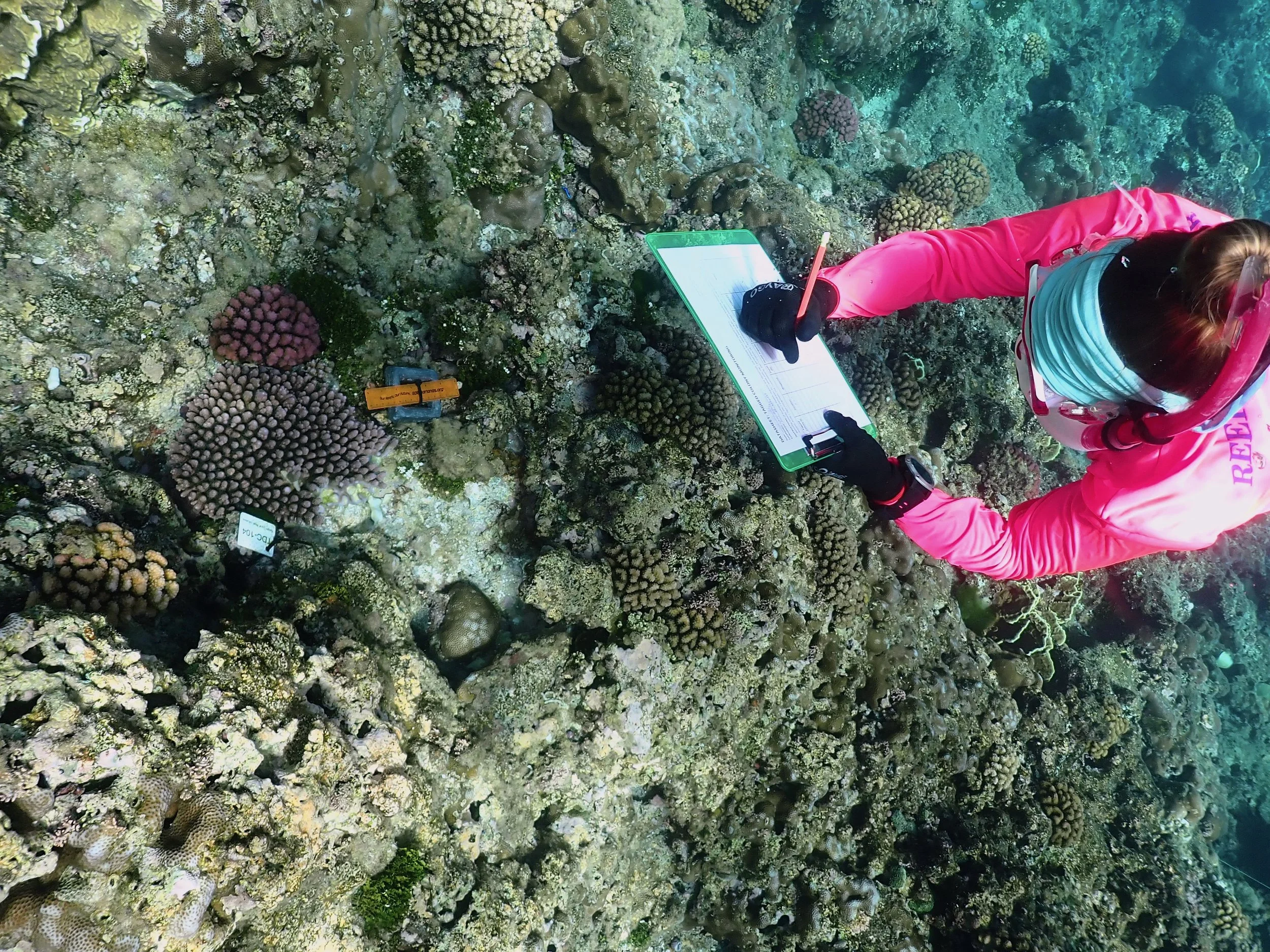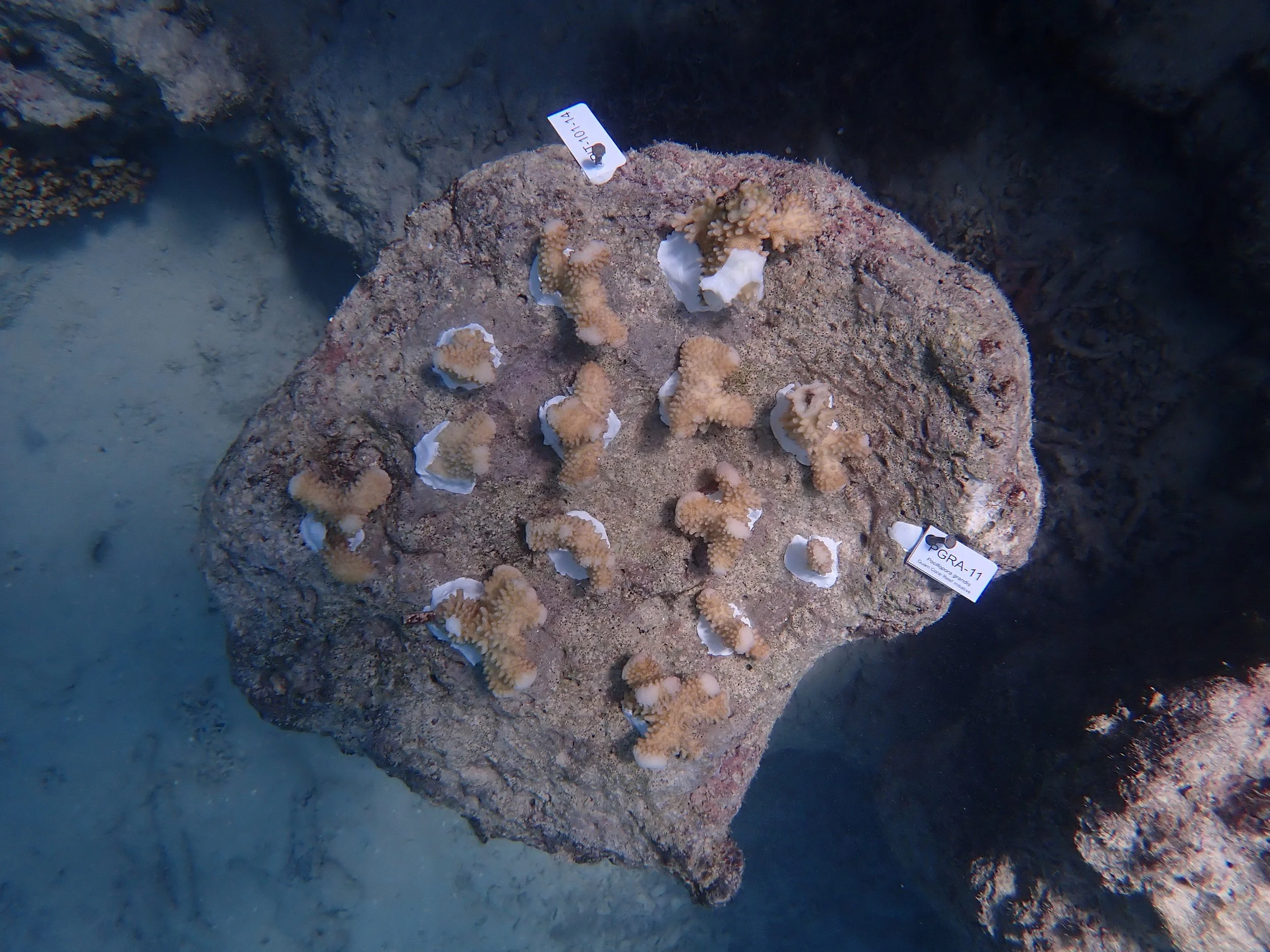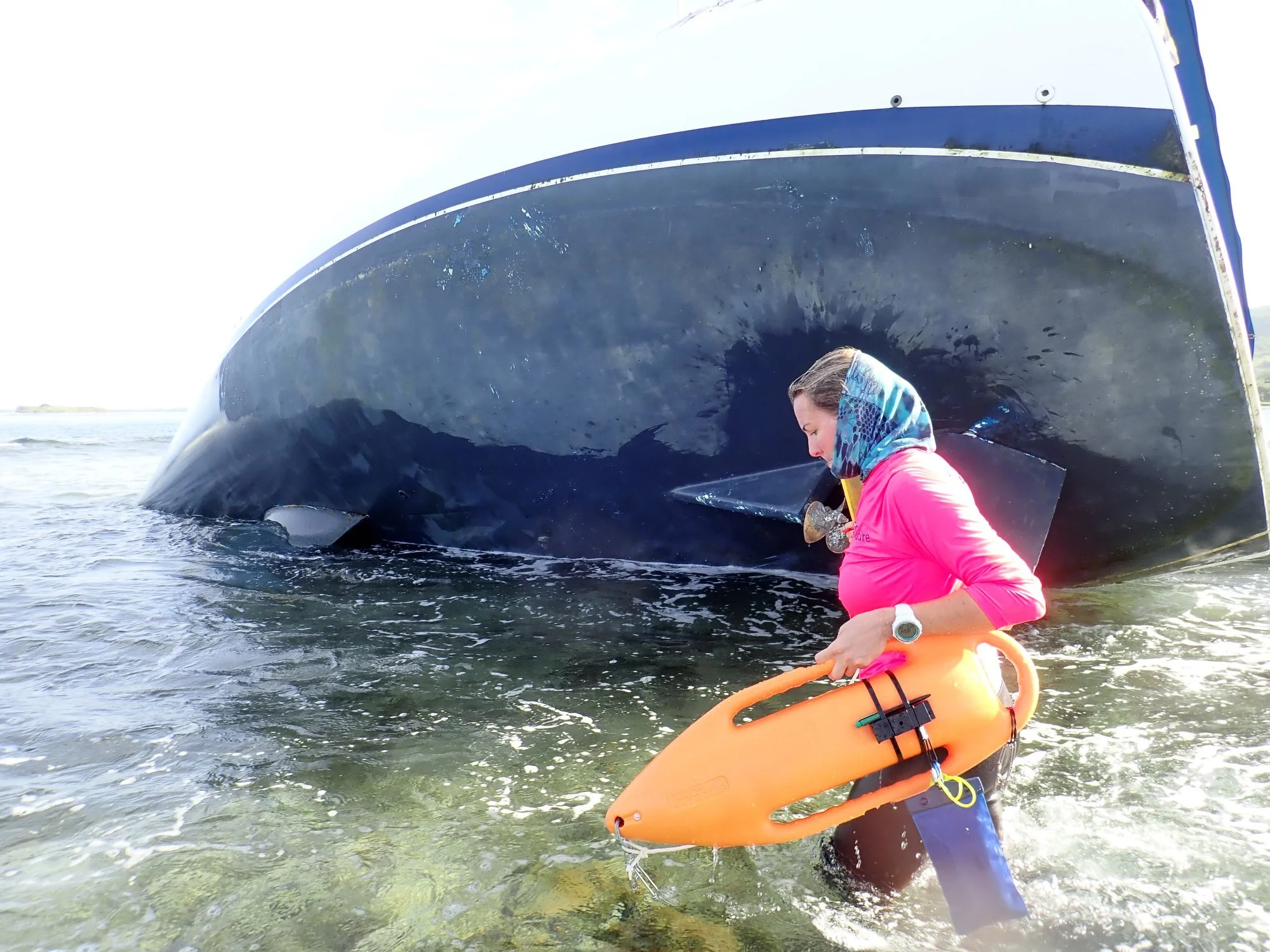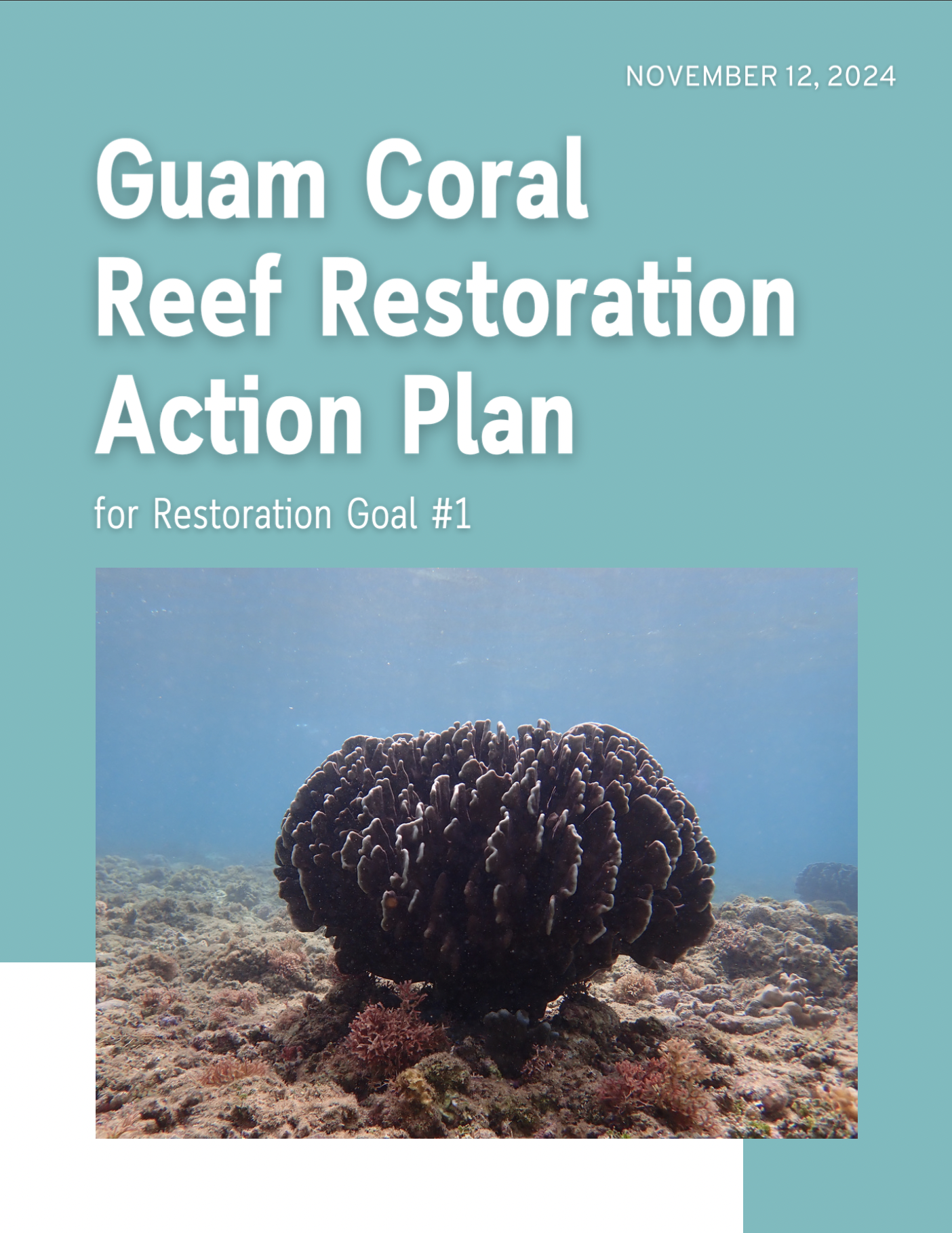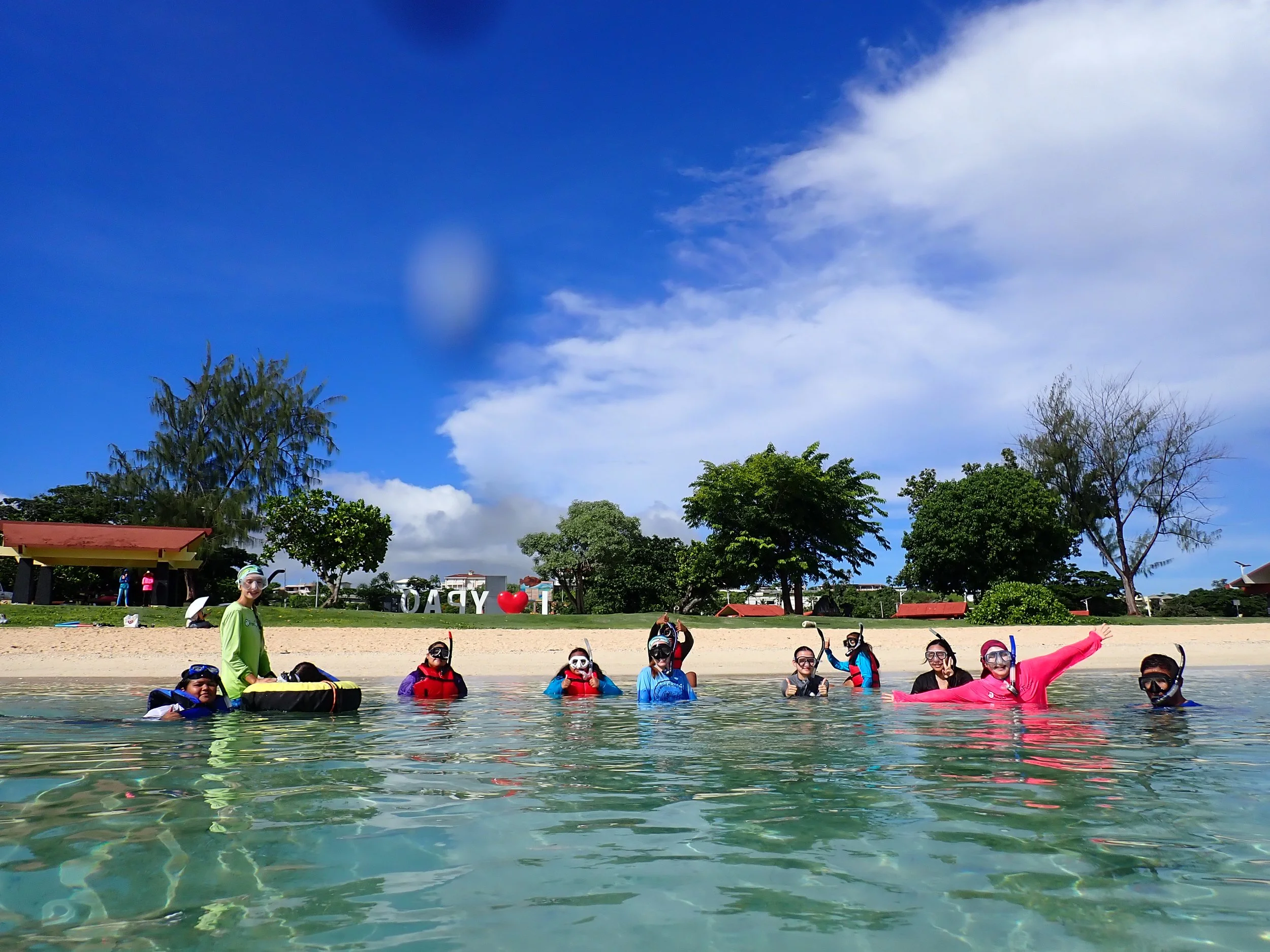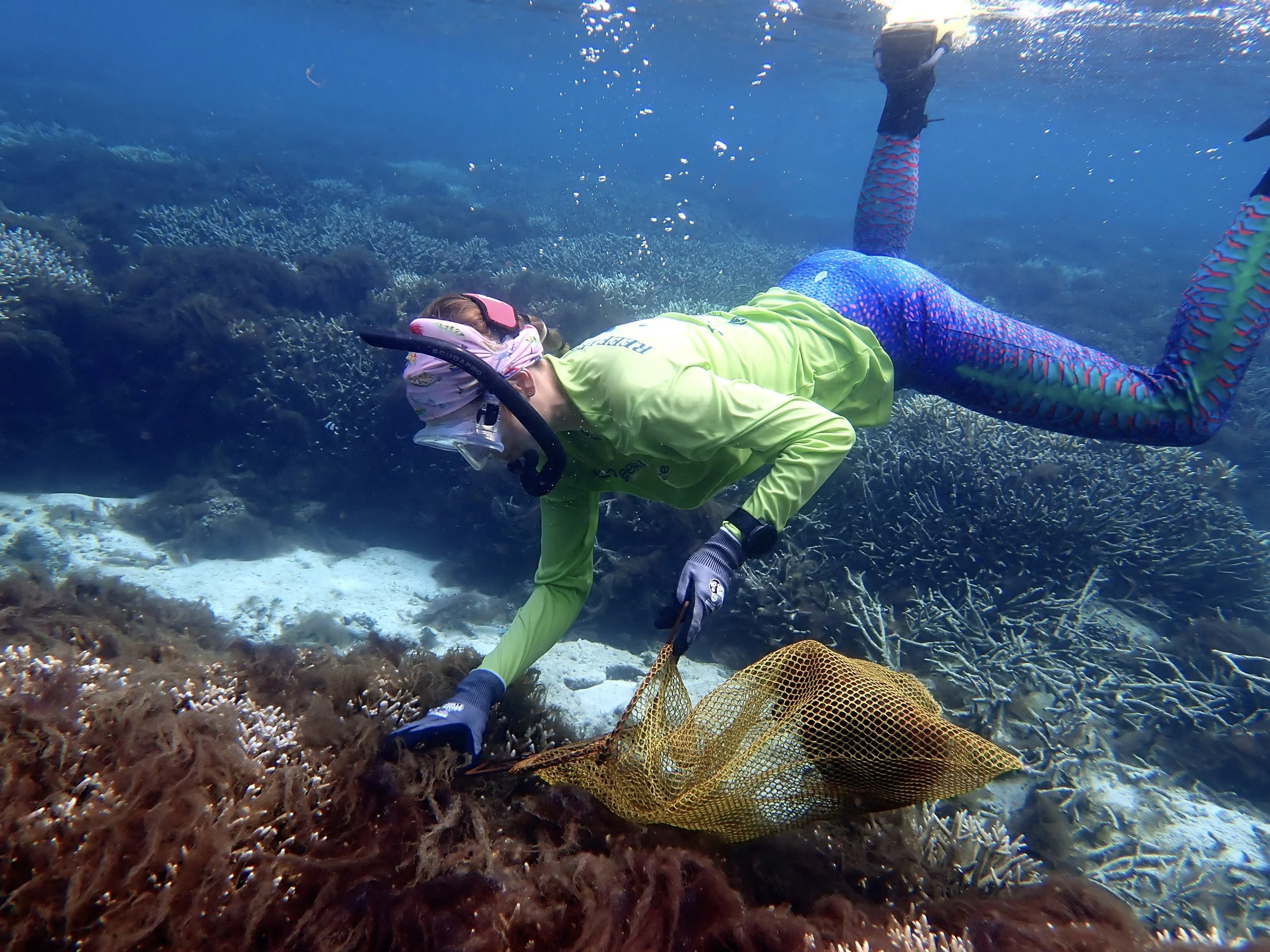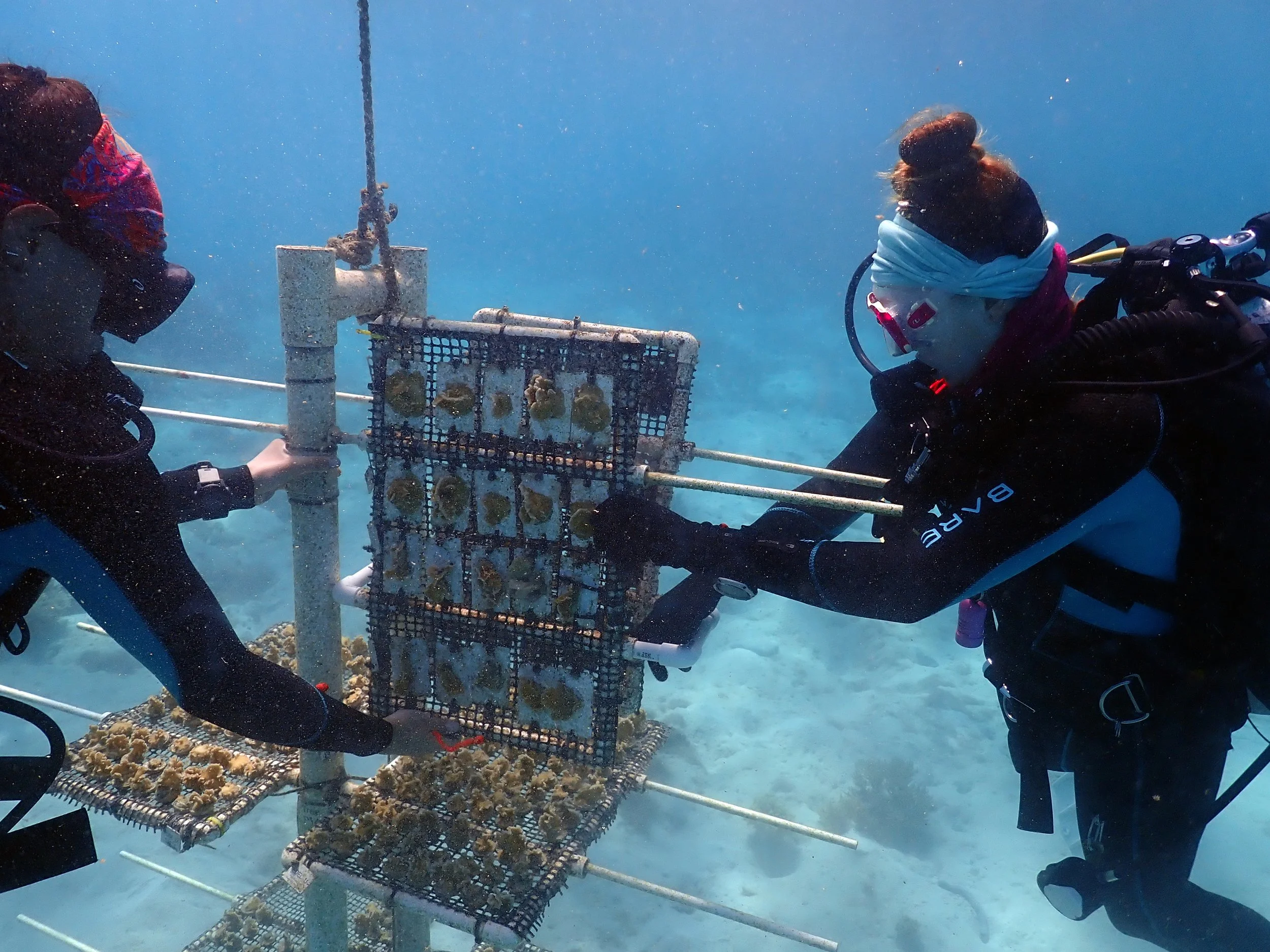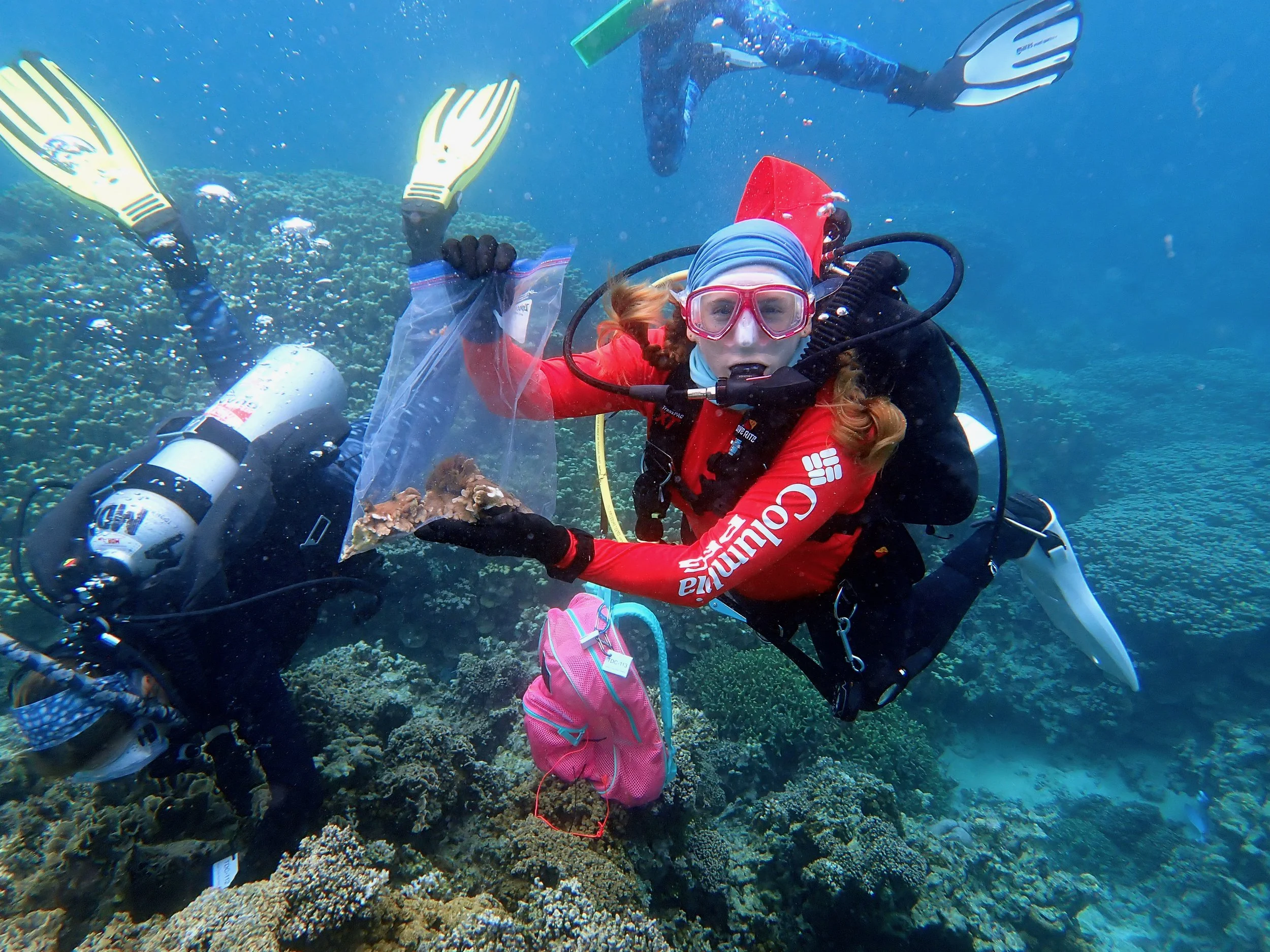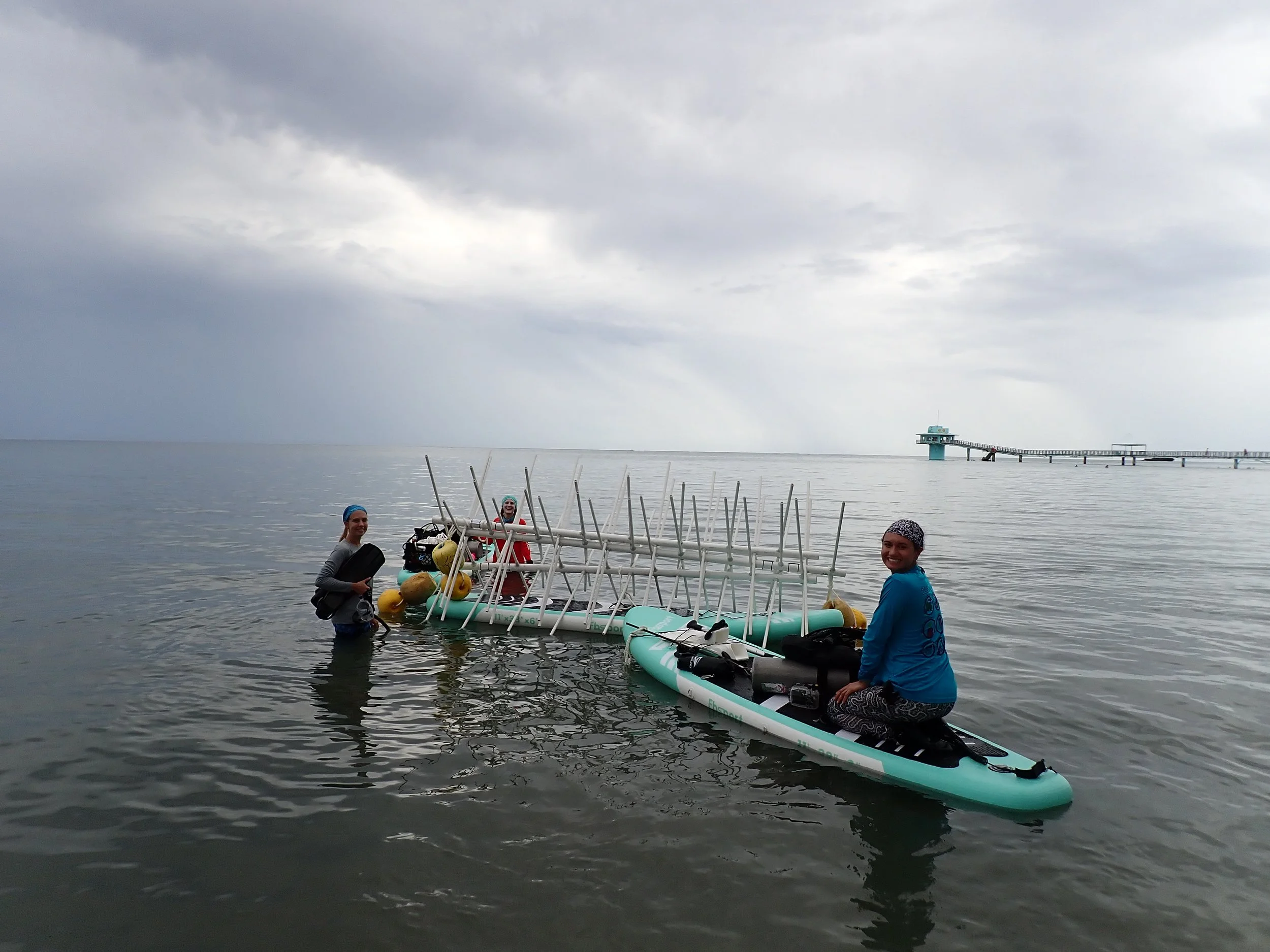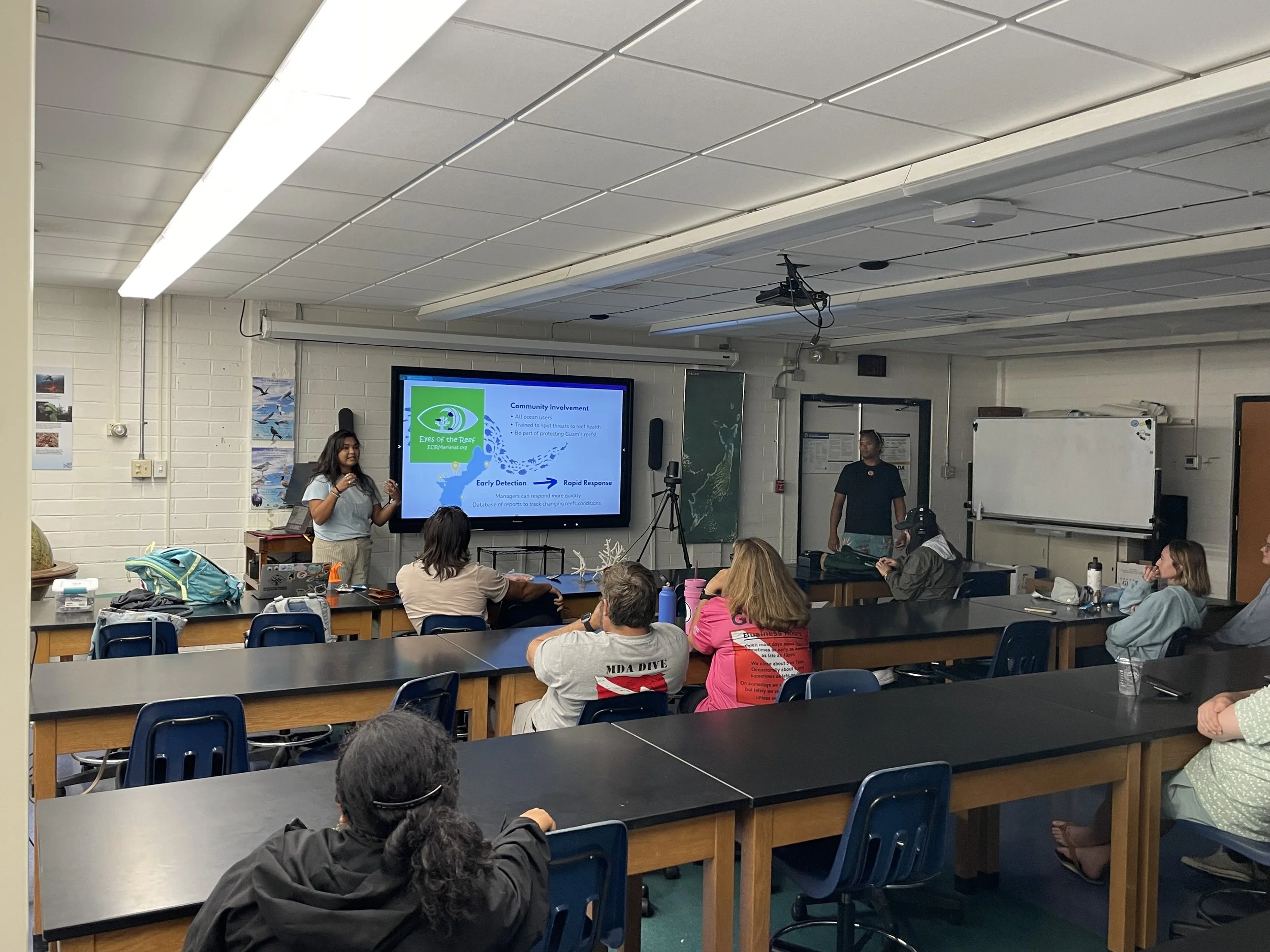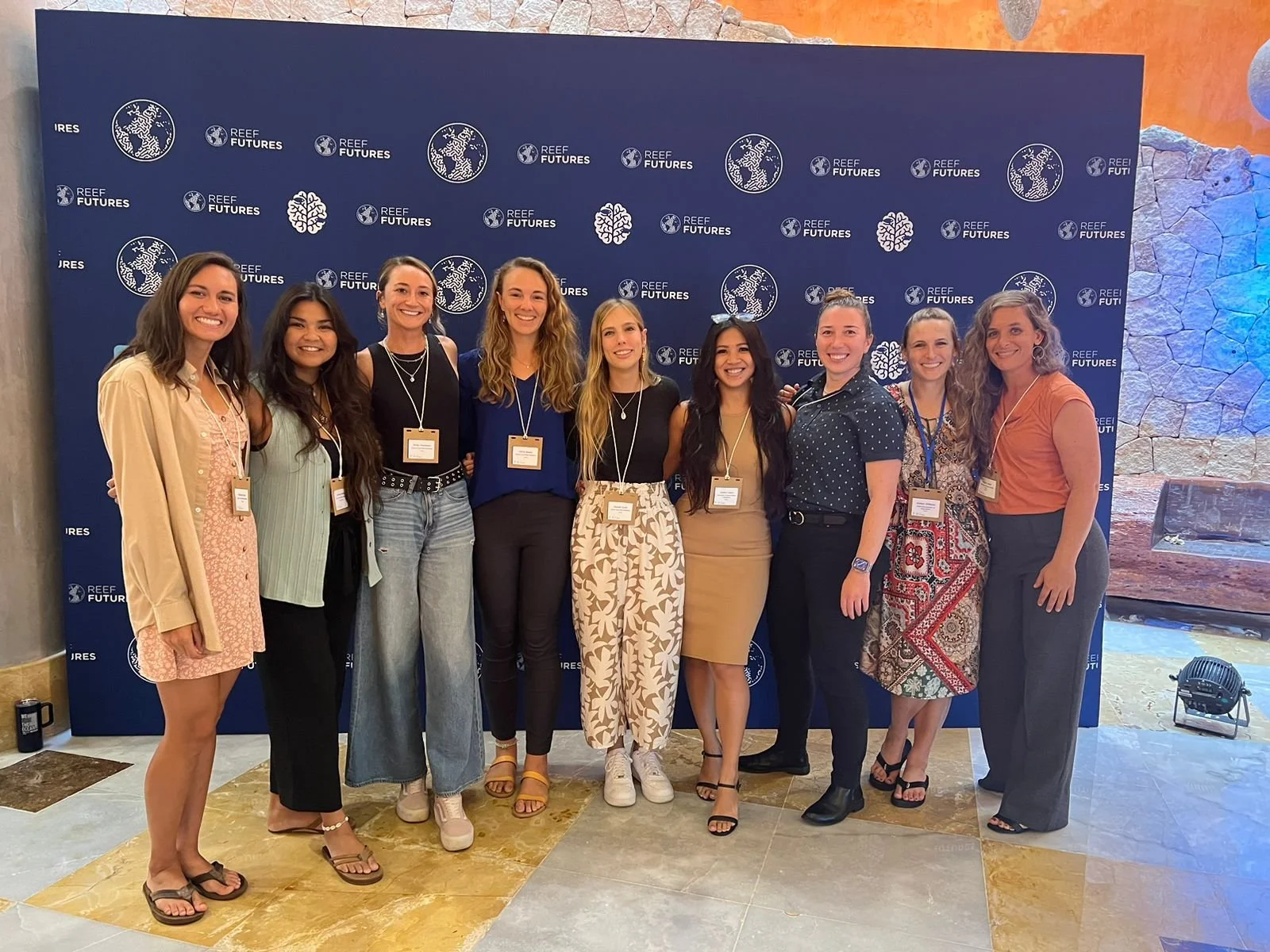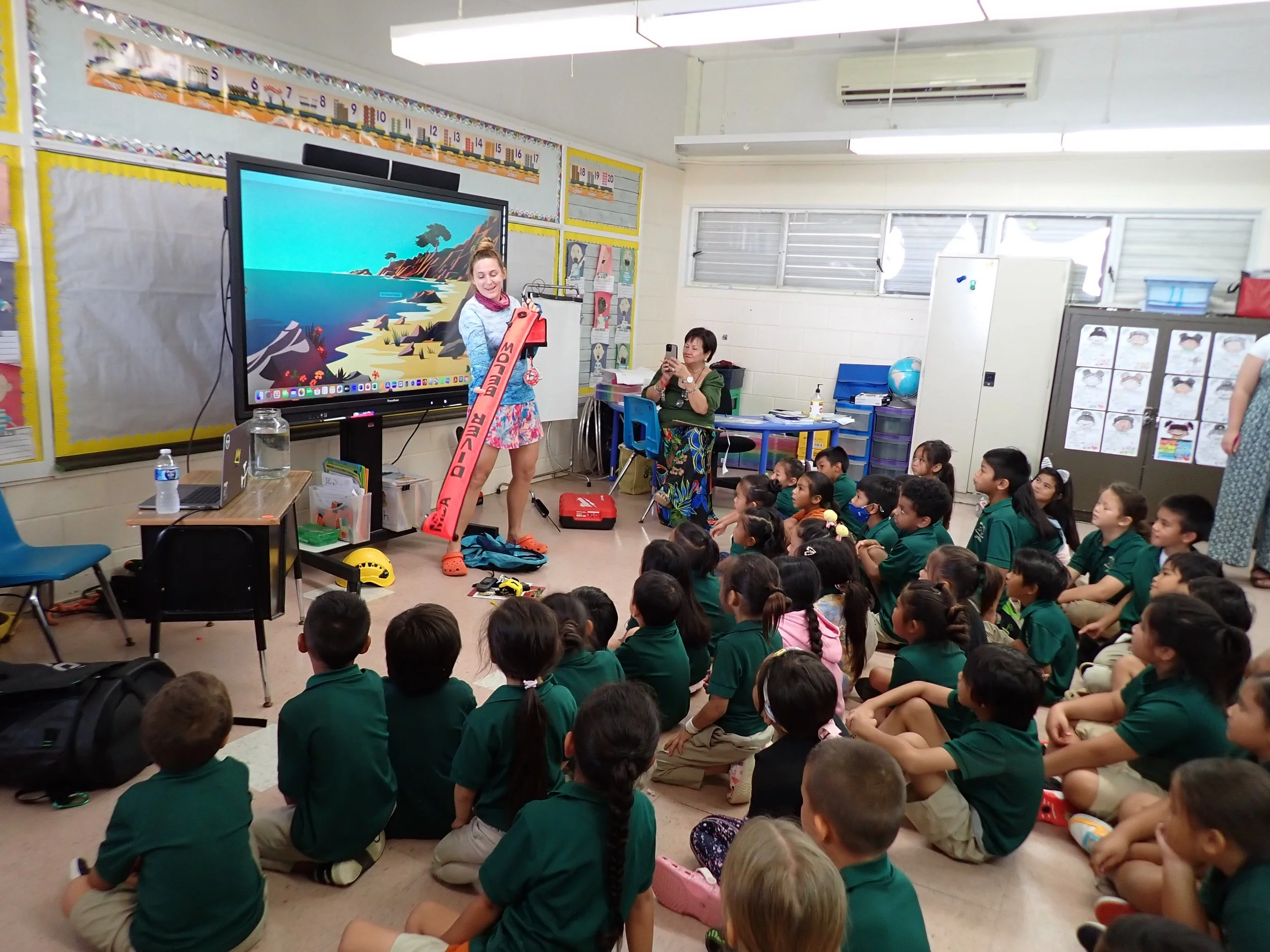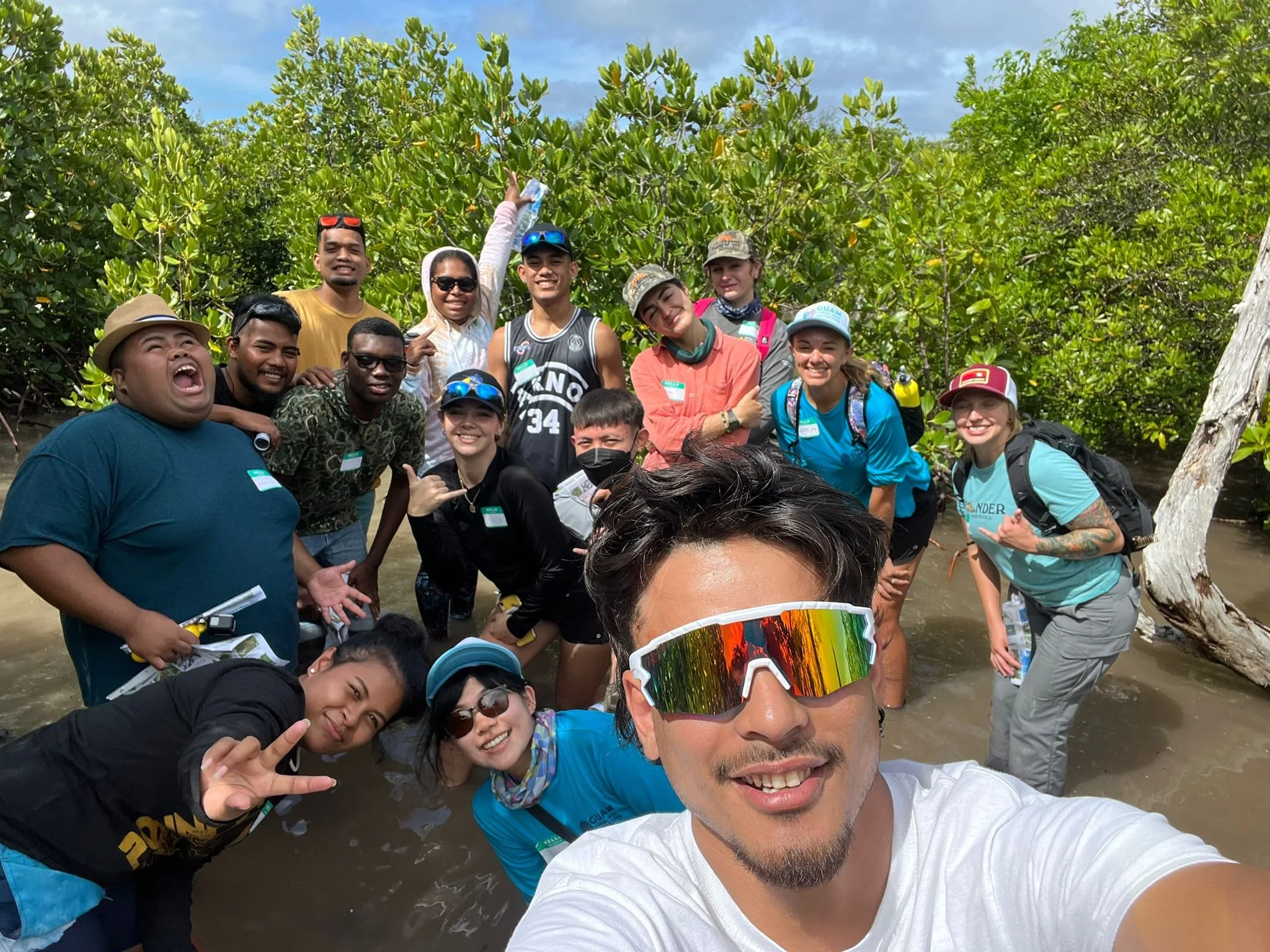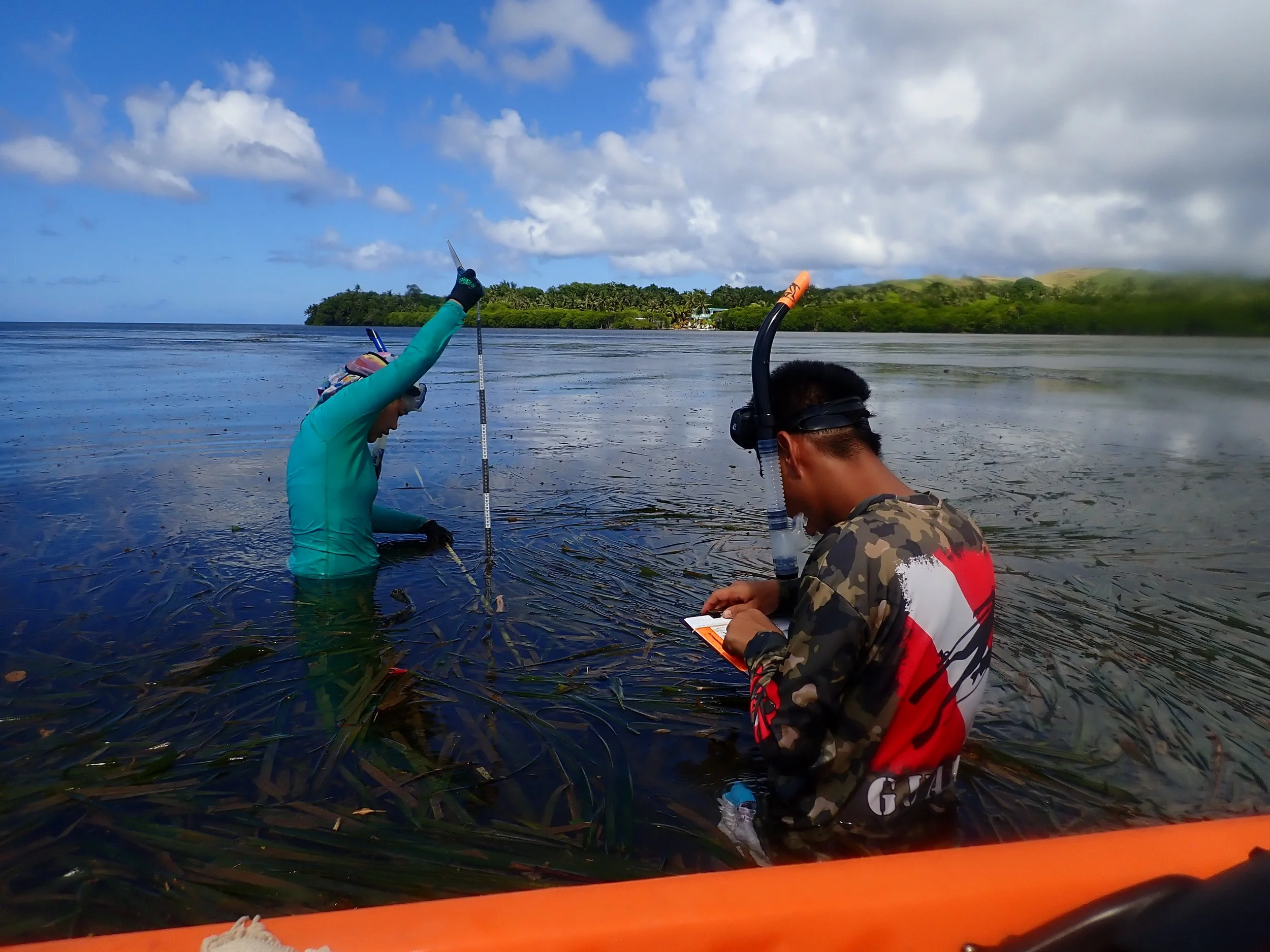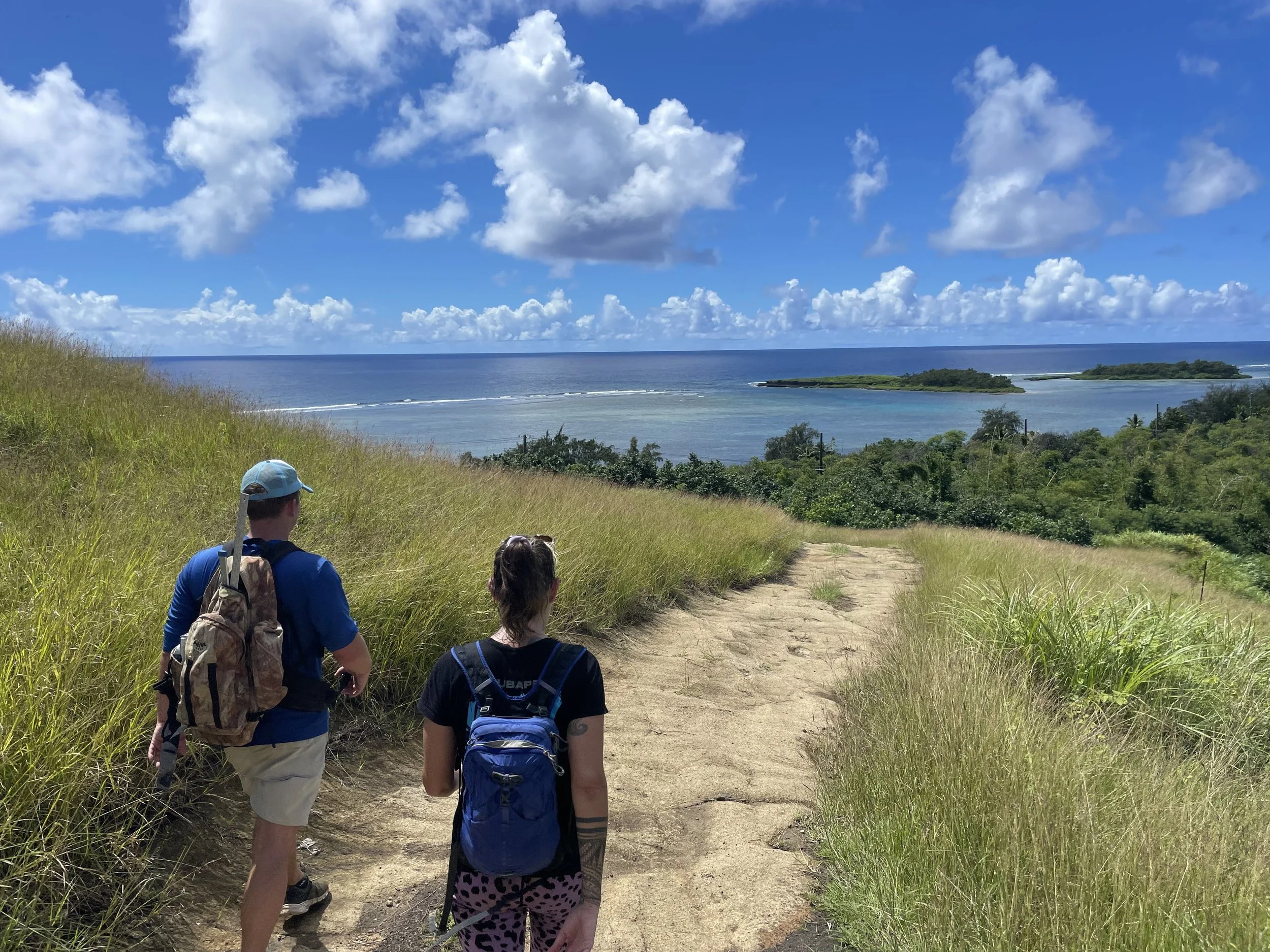
Our Work
Our work is guided by the Guam Coral Reef Resiliency Strategy, which was developed in 2018 with input from our local and national partnering organizations.
The strategy focuses on 5 main goals:
1. Effective fisheries management
2. Decreased land-based sources of pollution
3. Increased reef response and restoration
4. Sustainable recreational use and tourism
5. Human community resilience and climate change adaptation
The Guam Coral Reef Initiative team seeks to use many different approaches to address threats to Guam’s coral reefs. We regularly collaborate with other partners around the island on programs, projects, and plans, so read on to learn more!

Coral Reef Restoration
From tano’ to tåsi, the vision of GCRI is to develop a comprehensive program for the conservation and effective management of Guam’s coral reef ecosystems through sustainable use and wise preservation. Coral reef restoration is one of the three pillars of effective coral conservation, along with mitigating local stressors and increasing coastal resilience, and is a process of growing coral fragments in a nursery and then outplanting them on the reef to restore reef health. GCRI recently incorporated coral reef restoration to support our coral conservation mission.
With funding from the National Marine Sanctuary Foundation, GCRI built its first underwater coral nursery in the Piti Bomb Holes Marine Preserve in 2024 and its second nursery in Apra Harbor in 2025.
Piti Bomb Holes nursery
Est. June 2024
7 branching trees, and 3 wing trees (10 trees total)
Over 1,500 coral fragments
Apra Harbor/Dogleg Reef nursery
Est. February 2025
4 branching trees, and 1 wing tree (5 trees total)
Over 500 coral fragments
-
Once the team received the necessary permits, they built and deployed nursery structures to house the coral fragments they would collect. While there are many types of structures used for coral nurseries, GCRI uses a structure called a coral tree, two examples of which are pictured above.
A coral tree, as the name implies, is shaped like a tree with a central trunk and several branches. Coral fragments are attached to the branches, where they have continuous access to high water flow, nutrients, and sunlight.
GCRI uses two types of coral trees: branching trees and wing trees.
Branching trees (pictured on the right) have coral fragments hanging from a piece of fishing line and are best for branching coral types, while wing trees (pictured on the left) have coral fragments growing on a flat tray and are best for boulder coral types.
Once the branching trees and wing trees were built and installed, the GCRI restoration team collected fragments from coral colonies around the island and attached the fragments to the coral trees. The baby corals attached to the coral trees have been growing ever since!
-
GCRI is not the only group doing coral restoration, but joins the UOG Marine Lab in their existing reef restoration efforts! The UOG Marine Lab established a nursery in Piti Bomb Holes Marine Preserve in 2014 and in Cocos Island Lagoon in 2019.
-
Many coral restoration and coral conservation activities, in general, require following legal procedures and obtaining the proper permits and clearance to carry out the activity. Below are the specific permits GCRI obtained to do our coral reef restoration work.
Piti Nursery Permits
Division of Aquatic & Wildlife Resources Special Permit for Scientific Collection/Research
SCR-MPA-25-003
SCR-MPA-24-006
U.S. Army Corps of Engineers POH-2023-00142
Guam Environmental Protection Agency WQC Order No. 2024-02
Dogleg/Apra Harbor Nursery Permits
Division of Aquatic & Wildlife Resources Special Permit for Scientific Collection/Research SCR-MPA-24-006
U.S. Army Corps of Engineers POH-2023-00142
Guam Environmental Protection Agency WQC Order No. 2024-02
DOD License No. N40192-25-RP-00004
Want to learn more? Check out this restoration permitting guide!
Get to know our coral nursery species
GCRI chose 7 species of corals in different shapes and sizes that fulfill different roles on the reef. For example, corals known as “branching corals” have delicate branches that make for great hiding places for fish and other marine species. On the other hand, corals known as “boulder corals” are slower-growing and hardy, and can withstand strong waves from storms. Certain fish or invertebrates like crabs, shrimps, and worms may prefer a certain coral species for habitat or as a food source. The GCRI nursery also houses a few “Corals of opportunity” (COO), which are pieces of coral that have been broken off by storms or human-caused threats, and get a second chance at life growing in the nursery!
Maintenance
Coral nurseries require maintenance over time, such as the removal of algae, sediment, and other nuisance organisms that may impede the growth of the small coral fragments.
-
The GCRI restoration team has come up with some creative, low-tech solutions to reduce algal overgrowth, including upcycling old toothbrushes to scrub algae off of coral fragments and changing the orientation of the wing tree trays from horizontal to vertical in order to reduce the build-up of sediment.
In preparation for warmer waters and a higher risk for coral bleaching during the summer and fall, the GCRI reef restoration team installs shade cloths over the nurseries to cool down the water around the coral trees. This method has worked well for the UOG Marine Lab’s nursery during past bleaching events, so they kindly showed our team how to install these shade cloths for our nursery as well.
To enhance boulder coral growth by minimizing sediment build-up and algae overgrowth, the team has begun experimenting with hanging a few boulder species, such as G. fascicularis, P. speciosa, and P. decussata. There are several ways to optimize coral growth, and the restoration team is looking forward to the results of these trials!
Monitoring
The GCRI restoration team routinely monitors the health of corals in the nursery as well as the corals they collected fragments from (also known as donor colonies).
-
The team conducts underwater surveys of the corals in the nursery to assess factors such as growth rate, predation impacts, disease, algae overgrowth, bleaching, and mortality. To record this data, the team uses data sheets printed on special underwater paper.
The GCRI team has also been working with a variety of software to obtain growth rate measurements from single photos of coral fragments in the nursery. Hanging corals and trays are photographed over time with a scale bar and analyzed using a model in a computer program that can automatically detect and measure the corals. This process reduces the amount of work needed to obtain accurate measurements of corals, since previous methods involved tracing each individual coral.
Monitoring donor colonies ensures that they don’t sustain any long-term damage from collections and allows the team to compare changes in nursery corals vs reef corals. Monitoring data also helps the GCRI team identify heat-tolerant corals, priority sites for restoration, the health of outplants, and the best methods for growing and collecting corals.
Due to unseasonably warm waters in the fall of 2024, two out of four genotypes of Acropora surculosa bleached. Genotypes are just genetically-different individuals. The respective donor colonies on the reef also bleached, indicating that these colonies happened to be less heat-tolerant. The other two Acropora surculosa genotypes in the nursery and on the reef did not bleach. This highlights the importance of monitoring both nursery corals and donor colonies as well as collecting a variety of genotypes.
Some fragments of this coral species survived in the nursery even when its donor colony did not, serving as an example of coral nurseries acting as a refuge for certain species and genotypes during bleaching seasons.
Collaborative efforts - GCRI has collaborated with scientists testing new, non-invasive technologies and methods to identify heat-tolerant corals, in hopes of informing future decisions on which coral species to grow in the nursery.
Outplanting
Once nursery corals have grown to a mature size, the GCRI team begins the process of outplanting these colonies back onto the reef, bolstering the health and resilience of the ecosystem as a whole. The team has already outplanted several coral fragments from the Piti nursery as a pilot project to test the workflow!
-
Over just a few years, the advancement of technology and the number of digital tools available to coral reef managers and restoration practitioners have increased substantially. One of these tools is called photogrammetry, which allows scientists to obtain information about physical objects and the environment using photographs.
With this method, continuous underwater photos are taken during surveys and can be stitched together in a computer program to create highly accurate 3D models and a wider image of the reef. The GCRI team will be implementing photogrammetry as part of their monitoring methods to measure the growth of outplanted corals and determine the success of restoration.
Why do we do coral reef restoration?
Coral reef restoration provides many benefits to us and the ecosystems we depend on. Check out this infographic to learn more about these benefits, and click below to see the full infographic, including examples of each of these benefits in action. This infographic was created by GCRI staff in collaboration with members of the U.S. Coral Reef Task Force.
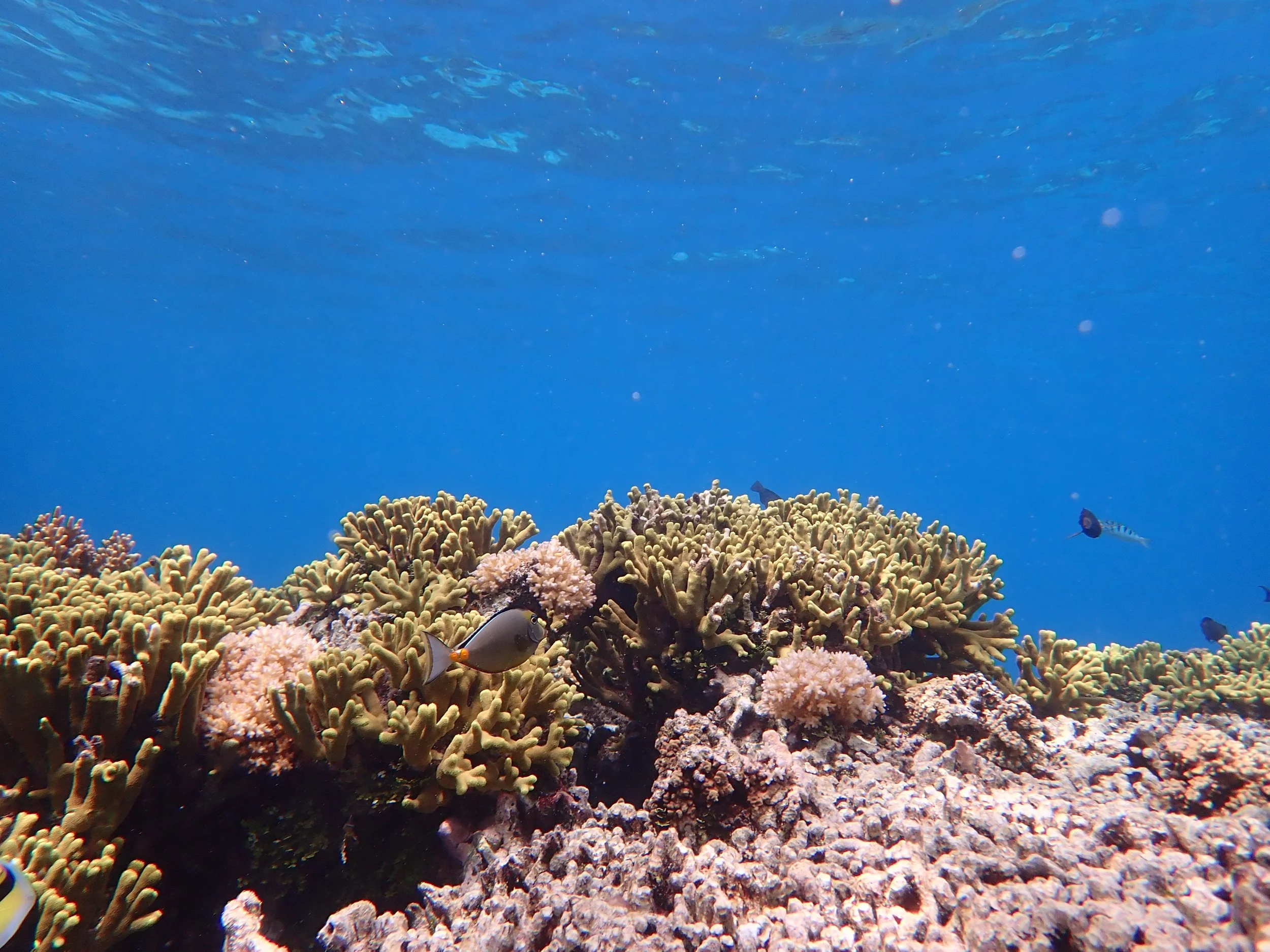
Programs
Eyes of the Reef Marianas
A training program to equip our community members with the skills and knowledge to identify and report coral reef threats
-
Eyes of the Reef (EOR) Marianas is a program that trains community members on identifying impacts on coral reefs and techniques for reporting impacts to coral managers. The program covers topics such as coral bleaching, coral disease, marine debris, crown-of-thorns starfish, and nuisance species. Training materials are online, and in person training events are open to the public.
Check out the new and improved EOR Marianas presentation slides
In the numbers
Launched in 2015
6 in-person training sessions held to date
-
Eyes of the Reef trainings have begun again in 2025!
Follow GCRI on Facebook or Instagram for the latest updates on our next EOR training.
Or, fill out this form to share your email with us so we can notify you the next time we schedule an in-person training
Watershed Restoration
Join us outdoors in working with DOAG forestry to plant trees that will restore upland areas and reduce impacts to coral reefs downstream
-
Pollution, stormwater, and sediments flow from the land onto adjacent coral reefs. These inputs can smother corals, cause harmful algal blooms, and result in coral disease outbreaks. Guam’s natural resource managers, students, and community members are working together to actively restore Guam’s watersheds to decrease the amount of pollution and sediments reaching our reefs. Watershed restoration increases the amount of vegetation on Guam’s land by replanting slopes and reducing the impacts of wildland fires and offroading. By planting trees and other native plants, we can prevent erosion; the roots of plants will hold the soil in place and reduce sediment runoff onto the reefs when it rains.
Watershed restoration is occurring in Malesso, Merizo, As Gadao, Masso Reservoir, and other sites around Guam. The work is spearheaded by the Guam Department of Agriculture Forestry and Soil Resources Division and is supported by NOAA, the Guam Coral Reef Initiative, the Bureau of Statistics and Plans, and other natural resource managers.
Community members are invited to attend plantings, so keep an eye on our Facebook page for upcoming opportunities!
Guardians of the Reef
Empowering the next generation to care for Guam’s coral reefs
-
The Guardians of the Reef Program is a collaboration between the Bureau of Statistics and Plans and the Guam Department of Education intended to mentor and educate the next generation of conservation leaders.
The program trains high school students to conduct presentations to third-grade students in a classroom setting about coral reefs, their importance to our island, the threats they face, and actions they can take to help preserve these valuable resources.
GCRI currently assists with funding and coordination for Guardians of the Reef, but the students and teachers are truly the lifeblood of this program!
In the numbers
7 high schools involved (6 public and 1 private)
26 elementary schools served
Launched in 2007
Guam Coral Reef Response Team
Preparing local reef managers to respond to immediate threats and deliver coral reef first aid
-
The Guam Coral Reef Response Team responds to acute impacts on Guam's coral reef ecosystems, including coral bleaching events, outbreaks of nuisance and invasive species, vessel groundings and chemical spills, and coral disease outbreaks. The Response Team includes representatives from local and federal government agencies and the University of Guam. GCRI coordinates and participates in this team.
In recent years, the Response Team has been busy collecting data on coral bleaching, which impacted Guam's reefs in 2013, 2014, 2016, and 2017. This effort is important as it allows local researchers and coral reef managers to better understand which of Guam's reefs may be most resilient to the impacts of climate change.
The Response Team is also conducting removal efforts for the crown-of-thorns sea star (known as COTS), which eats coral; one COTS can eat up to 100 square feet of live coral per year! Additionally, Response Team members track and remove invasive algae, remove marine debris (such as fishing nets) when necessary, and restore coral reefs that are damaged by vessel groundings and other physical impacts.
Guam Reef Restoration and Intervention Partnership (GRRIP)
Photo by Ashley Castro
Sharing local knowledge and resources to better serve Guam’s coral reefs
-
Sharing local knowledge and resources to better serve Guam’s coral reefs
The Guam Reef Restoration and Intervention Partnership (GRRIP) is a local team of scientists, managers, volunteers, and other concerned citizens conducting restoration on Guam.
GRRIP uses various coral cultivation techniques to grow corals quickly and securely in coral nurseries before they can reach a stable size and be outplanted to degraded reefs around Guam. The GCRI participates in restoration activities led by this group.
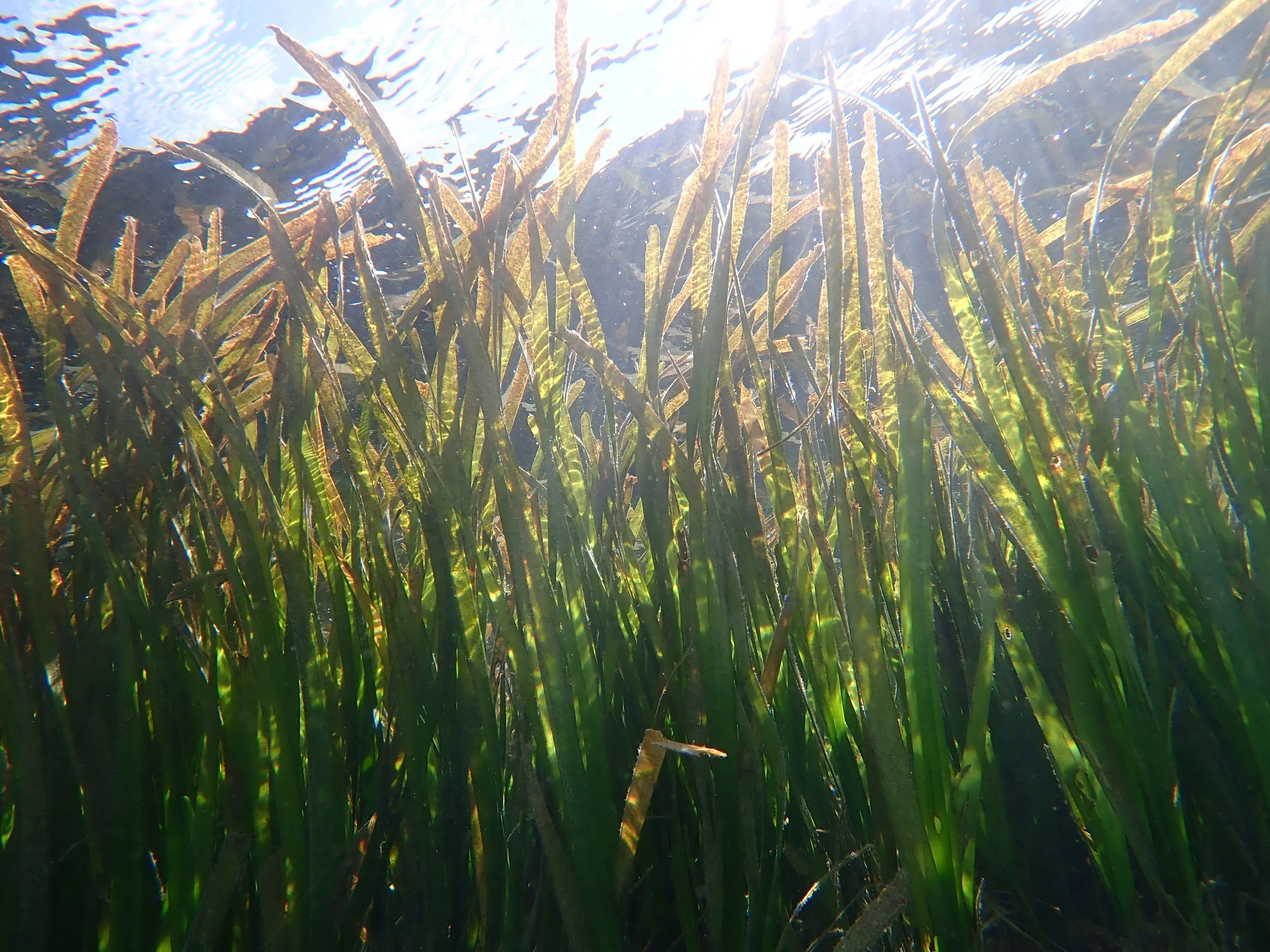
Projects
At GCRI, we are always working on various projects and producing new resources to help educate the community on the importance of Guam’s coral reefs. Explore some of our current and completed projects below.

Plans
Check out what we’ve been up to lately!
Past Programs and Projects
-
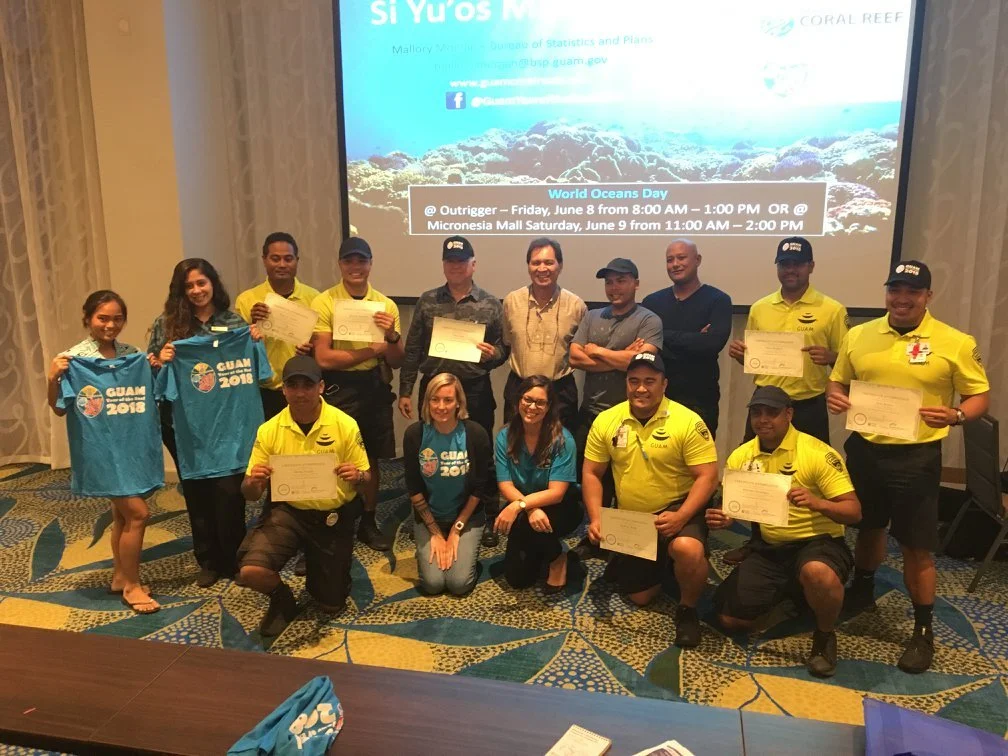
Hotels FOR Guam
Hotels FOR Guam was a partnership between BSP, NOAA, FOR Guam, and GHRA piloting seven hotels in Tumon Bay to reduce the impacts of tourism and recreational use on Guam’s coral reefs. The program cultivated environmental champions within the tourism industry who educated hotel staff on coral reef ecology, impact reporting, and safe and sustainable tourism. The program raised awareness and stewardship of coral reefs to Guam’s visitors by integrating coral reef outreach across various departments and marketing materials. This program was put on hold during the COVID-19 pandemic.
-

Guam Year of the Reef 2018
The third Guam Year of the Reef was Proclaimed by Lt. Governor Ray Tenorio by Resolution No 337-34 on February 2, 2018, to recognize the economic, biological, social, and cultural value of Guam’s coral reefs.
Guam Year of the Reef (GYOR) is a localized effort of the International Year of the Reef, which only occurs every ten years. Throughout 2018, GCRI highlighted Guam’s coral reef resources through social media, community events, newsletters, and new partnerships. Through the effort, GCRI developed new banners and outreach materials, and hosted a GYOR exhibit at the Guam Museum. GYOR2018 was a huge success with over 30 community events, a network of 22 partners, over 1,400 coral pledges by community members and visitors, and 300 Facebook followers.
-
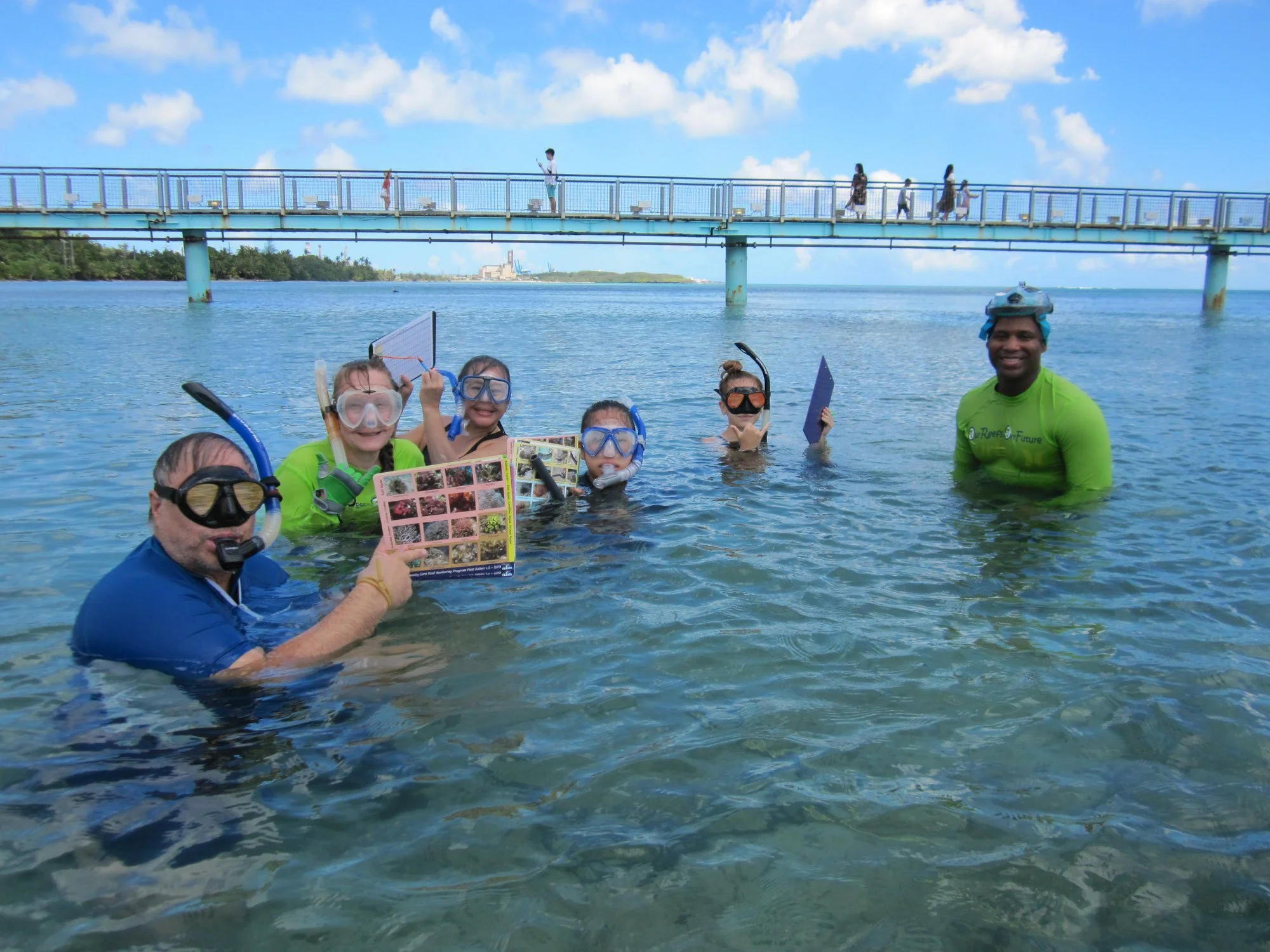
Community Coral Monitoring with FOR Guam
Friends of Reefs (FOR) Guam, formerly the Guam Community Coral Reef Monitoring Program, was a community program that supported stewardship of our island’s marine environment by Guam residents. Launched in 2012, FOR Guam started as a citizen science program to train residents to help monitor different reef flat areas in Guam. FOR Guam is currently being revamped and turned into a new program with a fisheries emphasis under the Department of Agriculture Division of Aquatic and Wildlife Resources (DAWR).
Photo by the Guam Community Coral Monitoring Program

“We need to respect the oceans and take care of them as if our lives depended on it. Because they do.”
— Sylvia Earle
